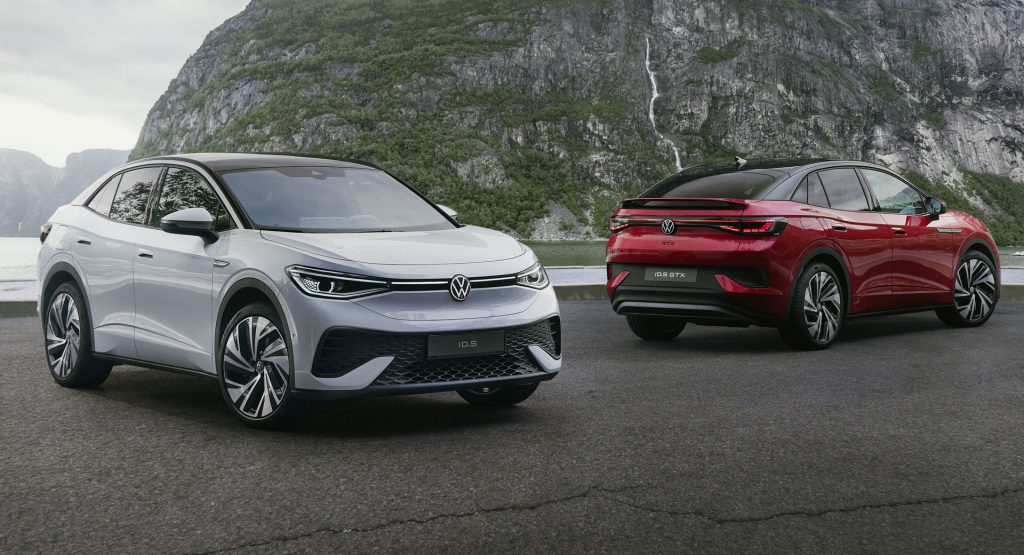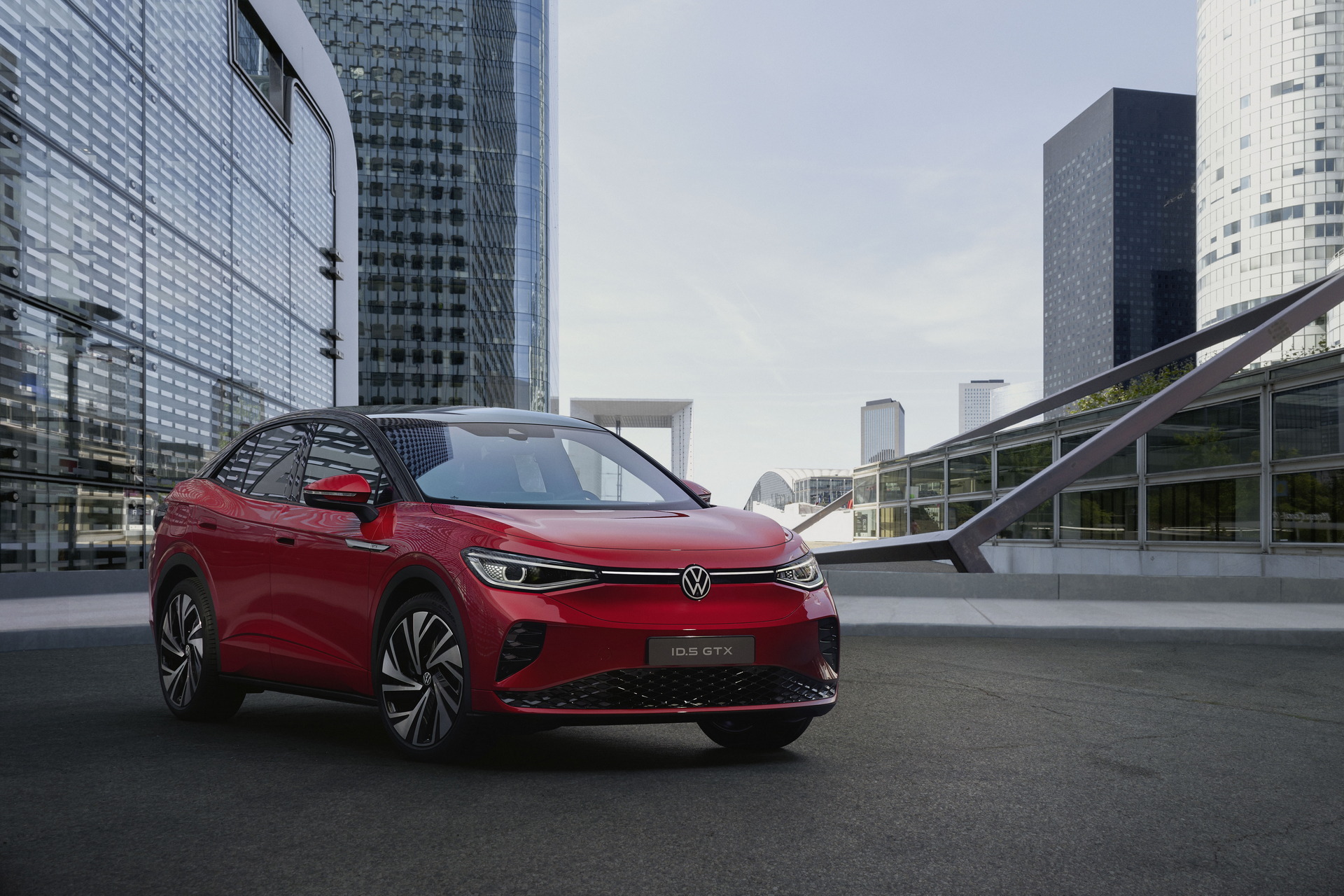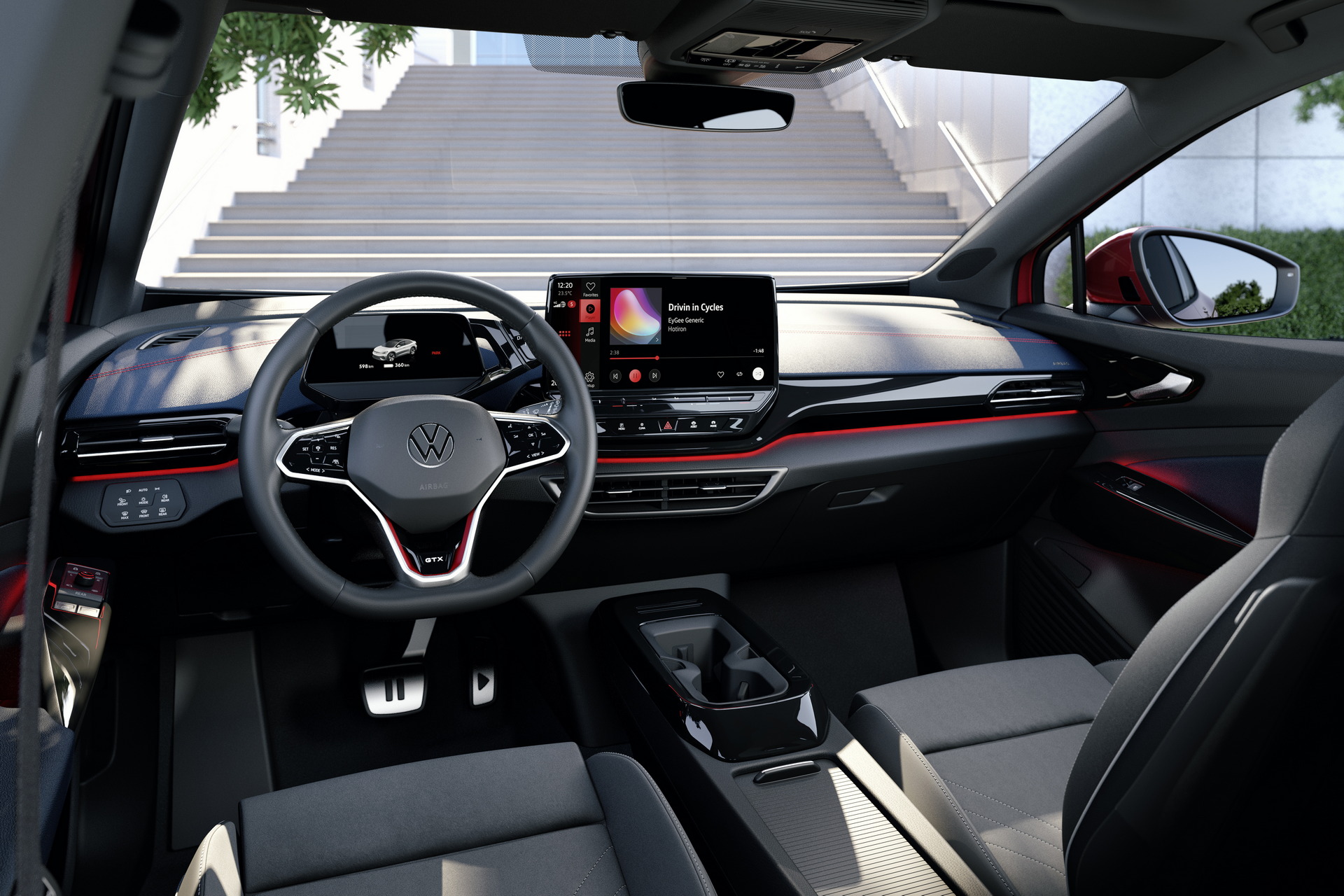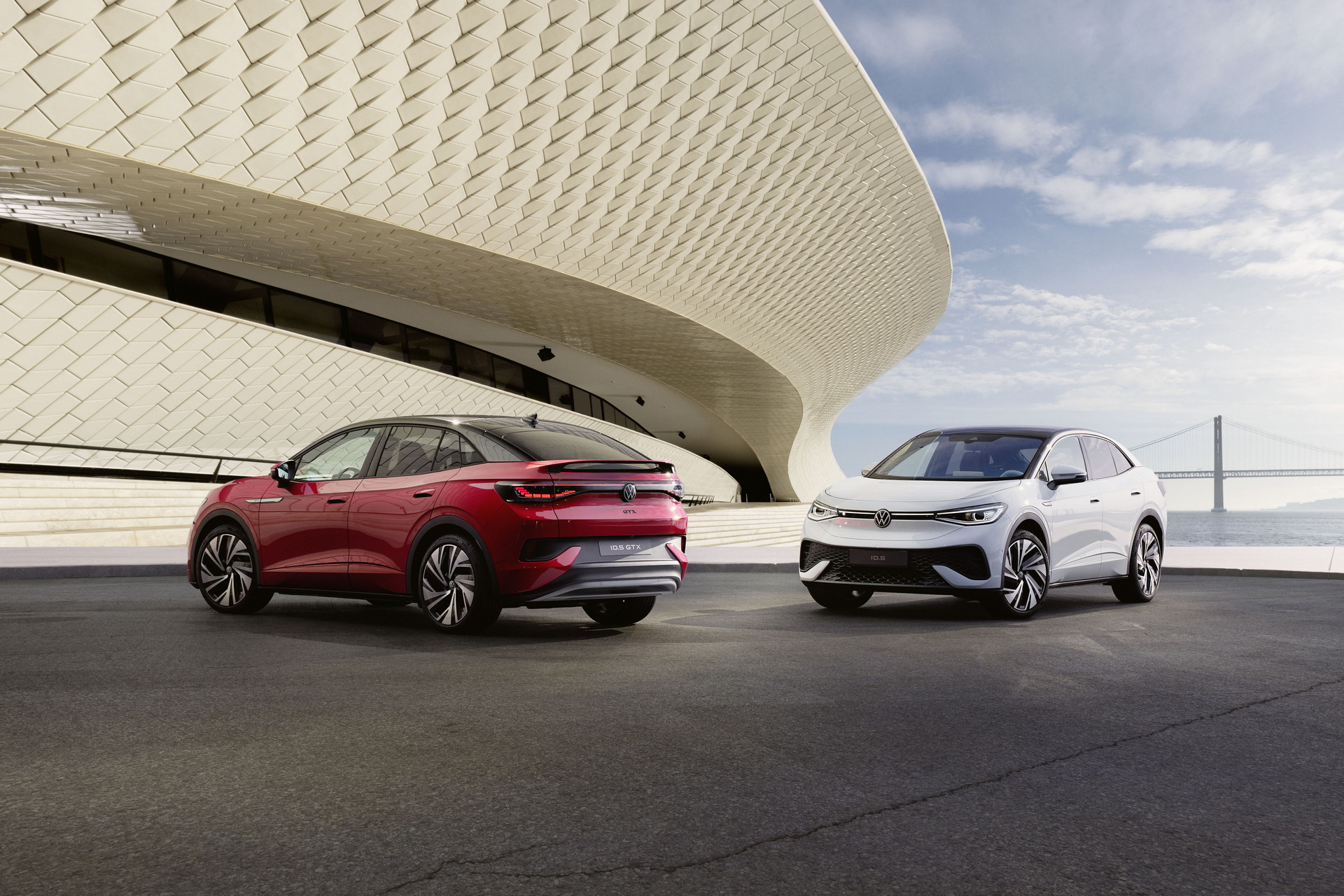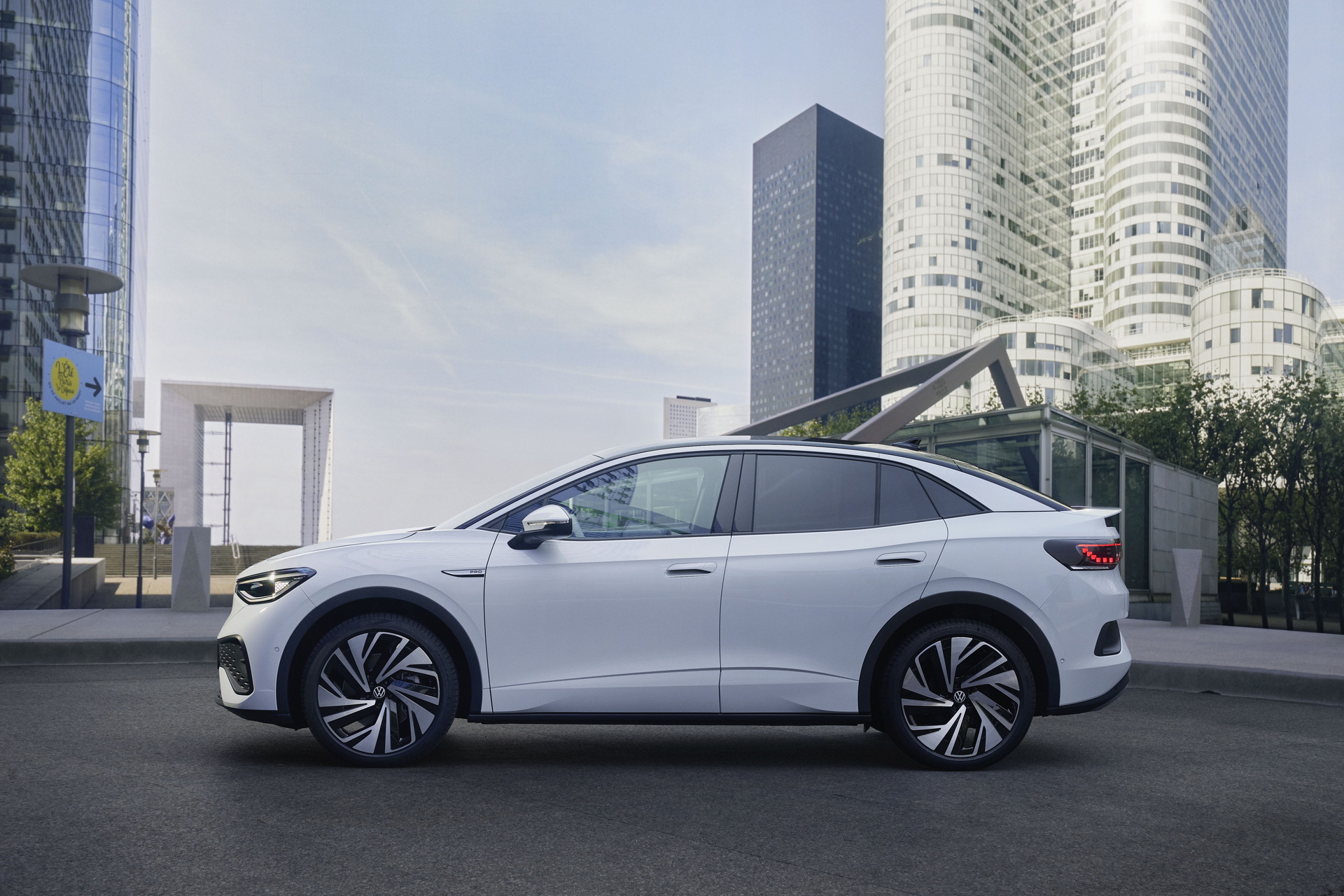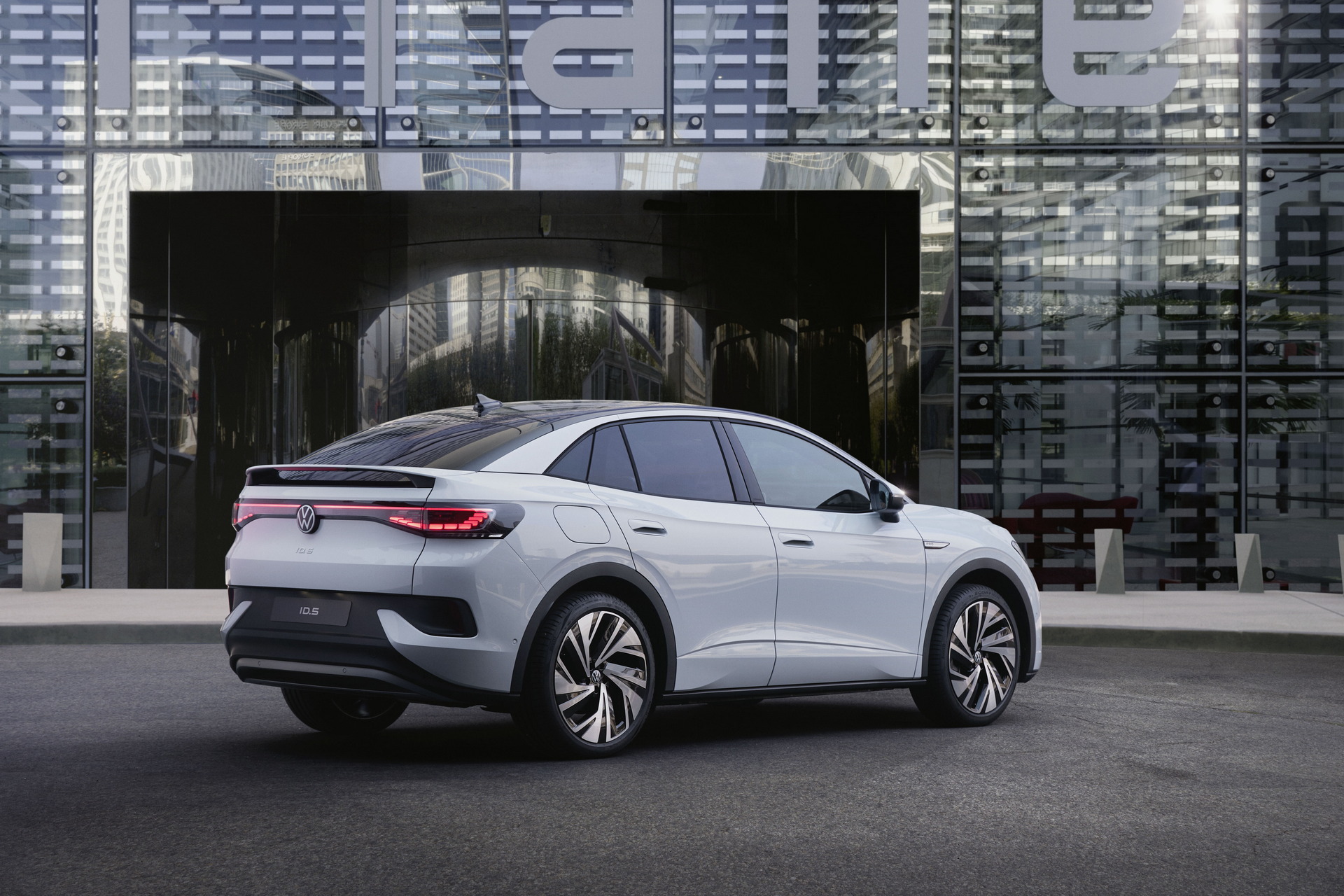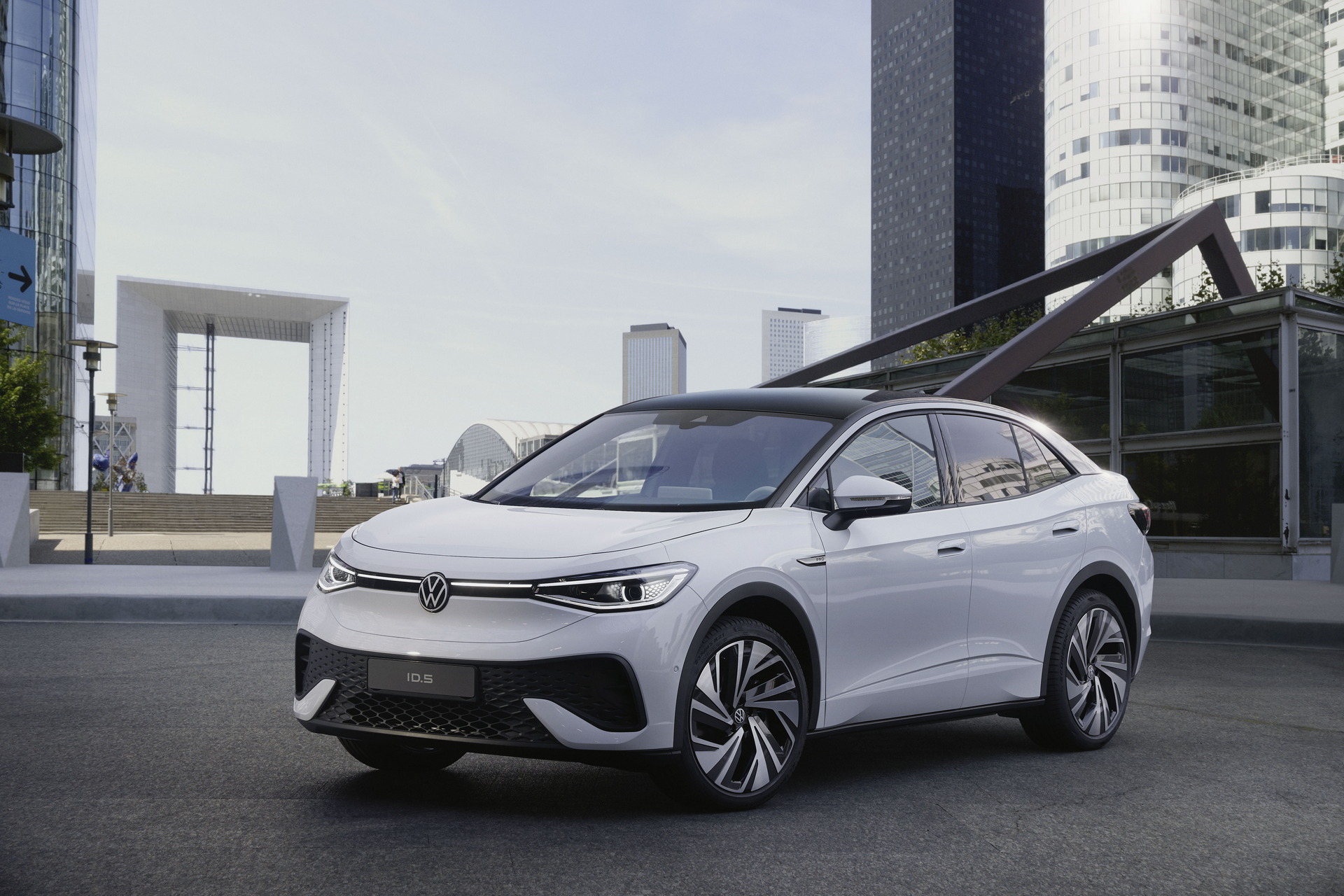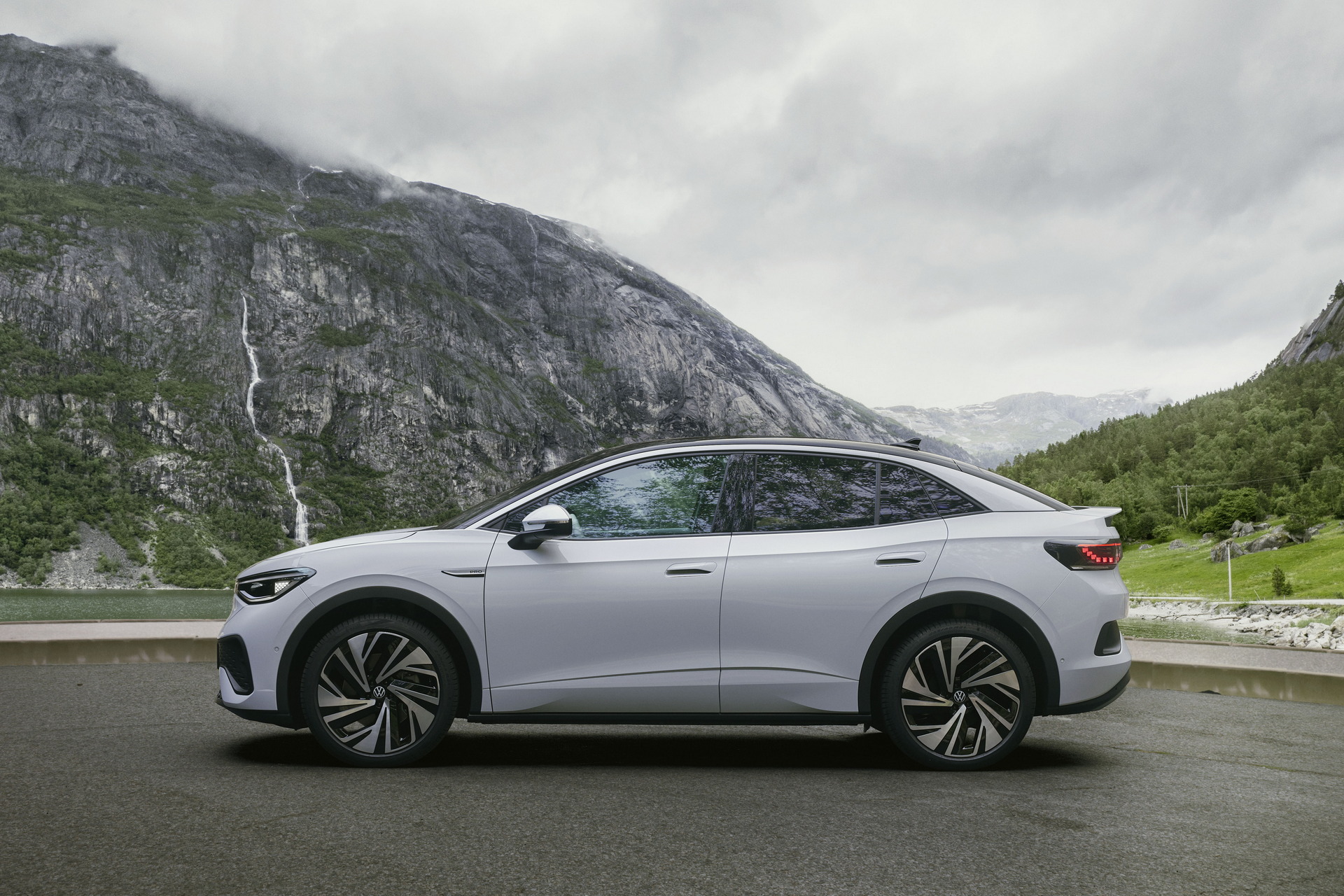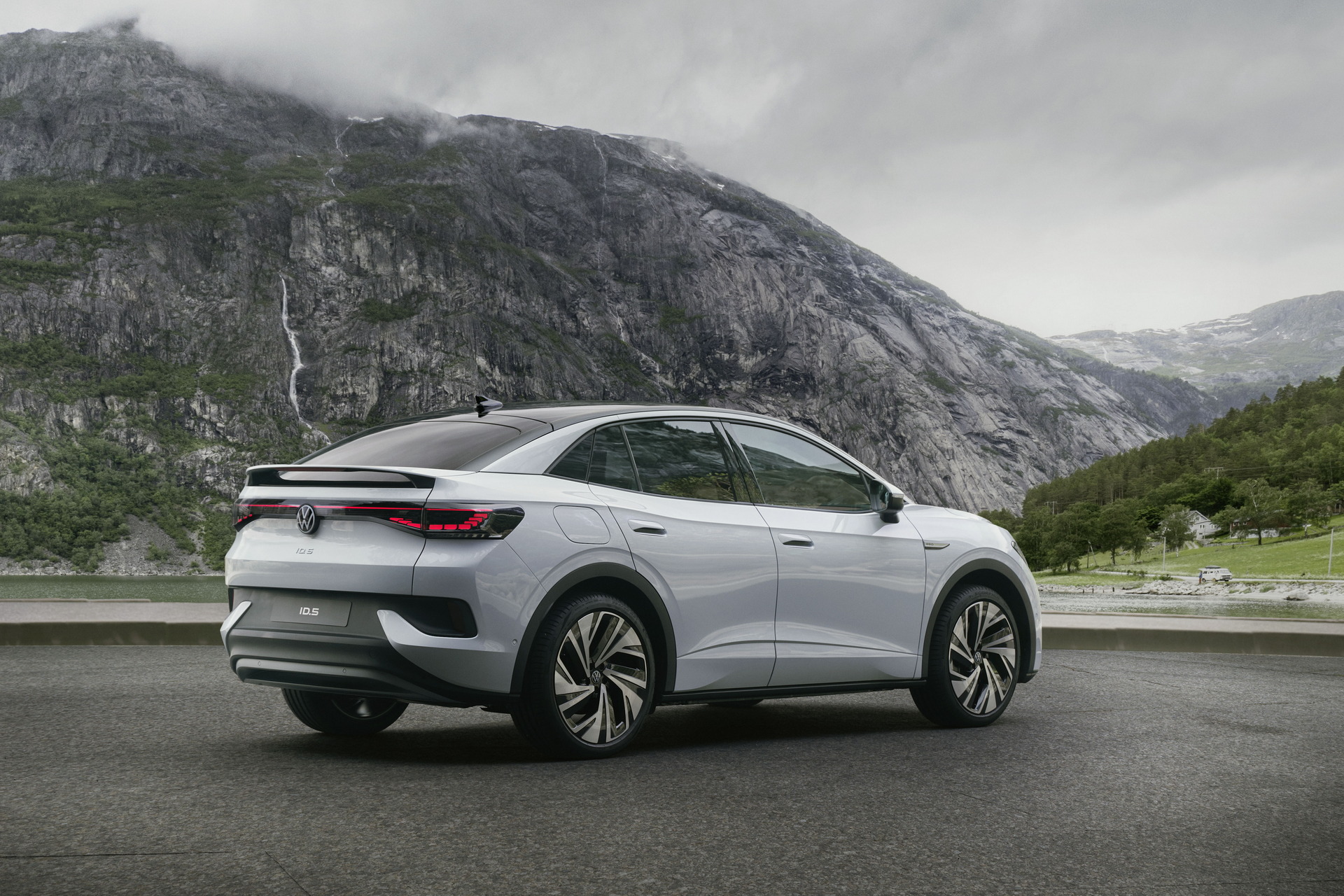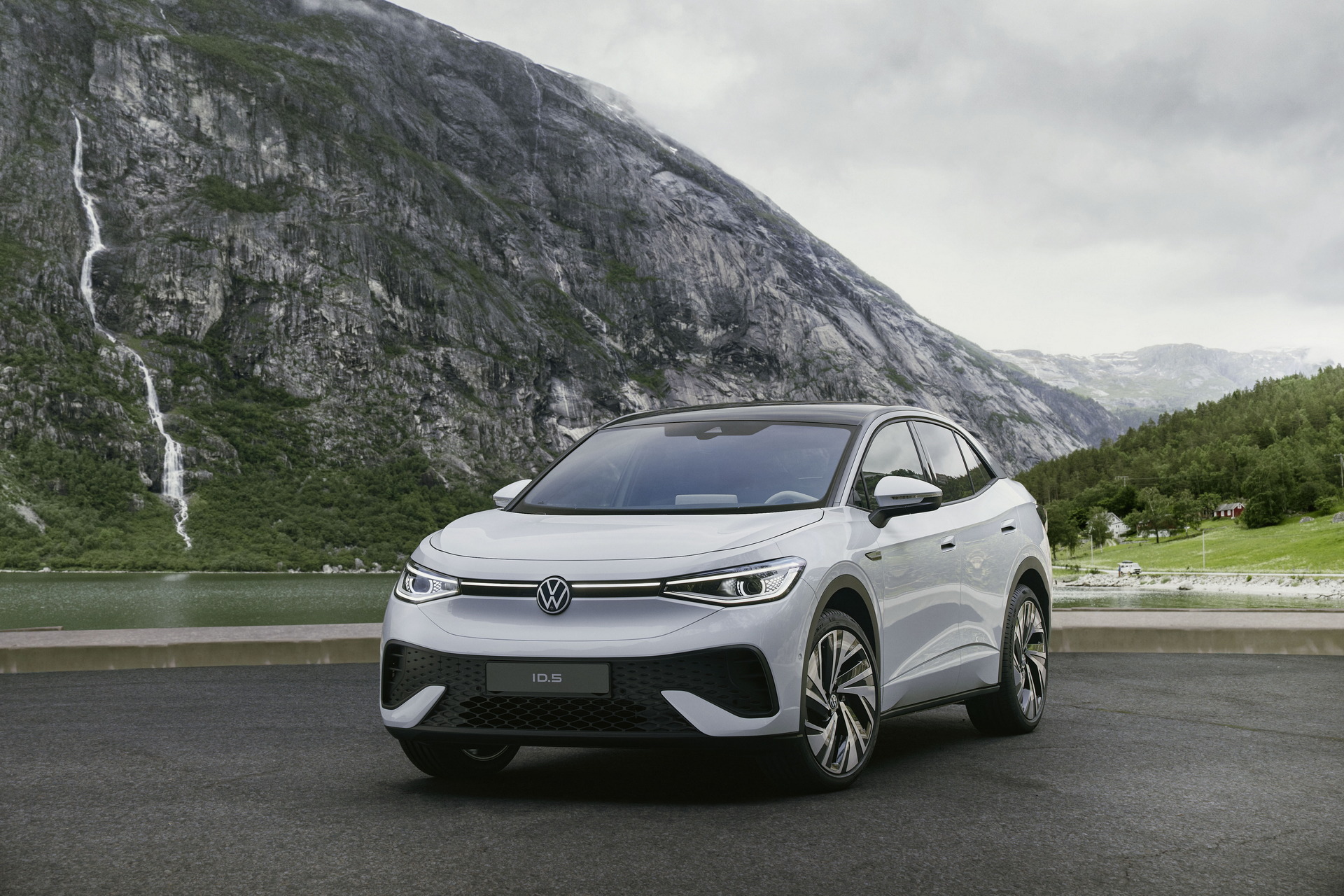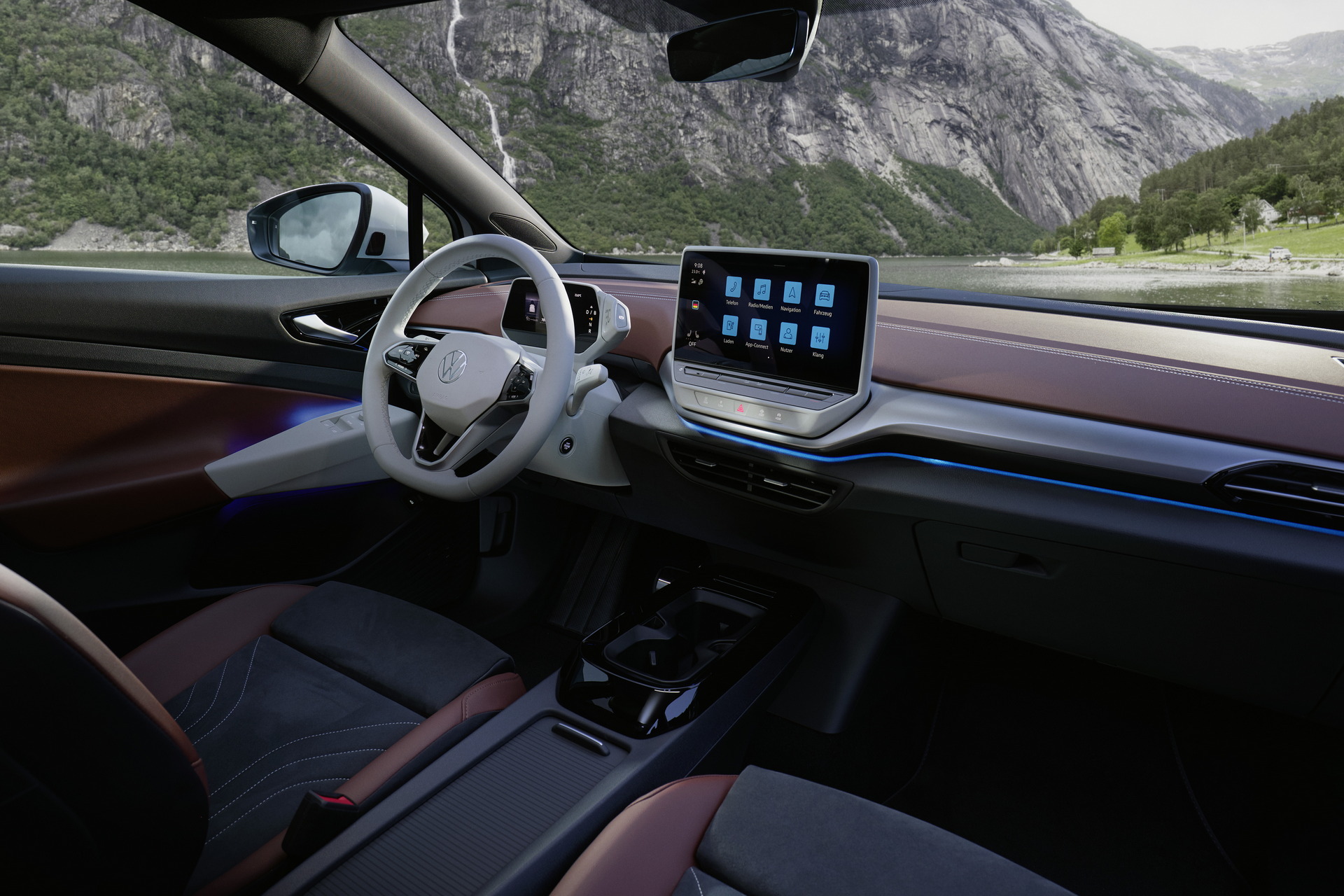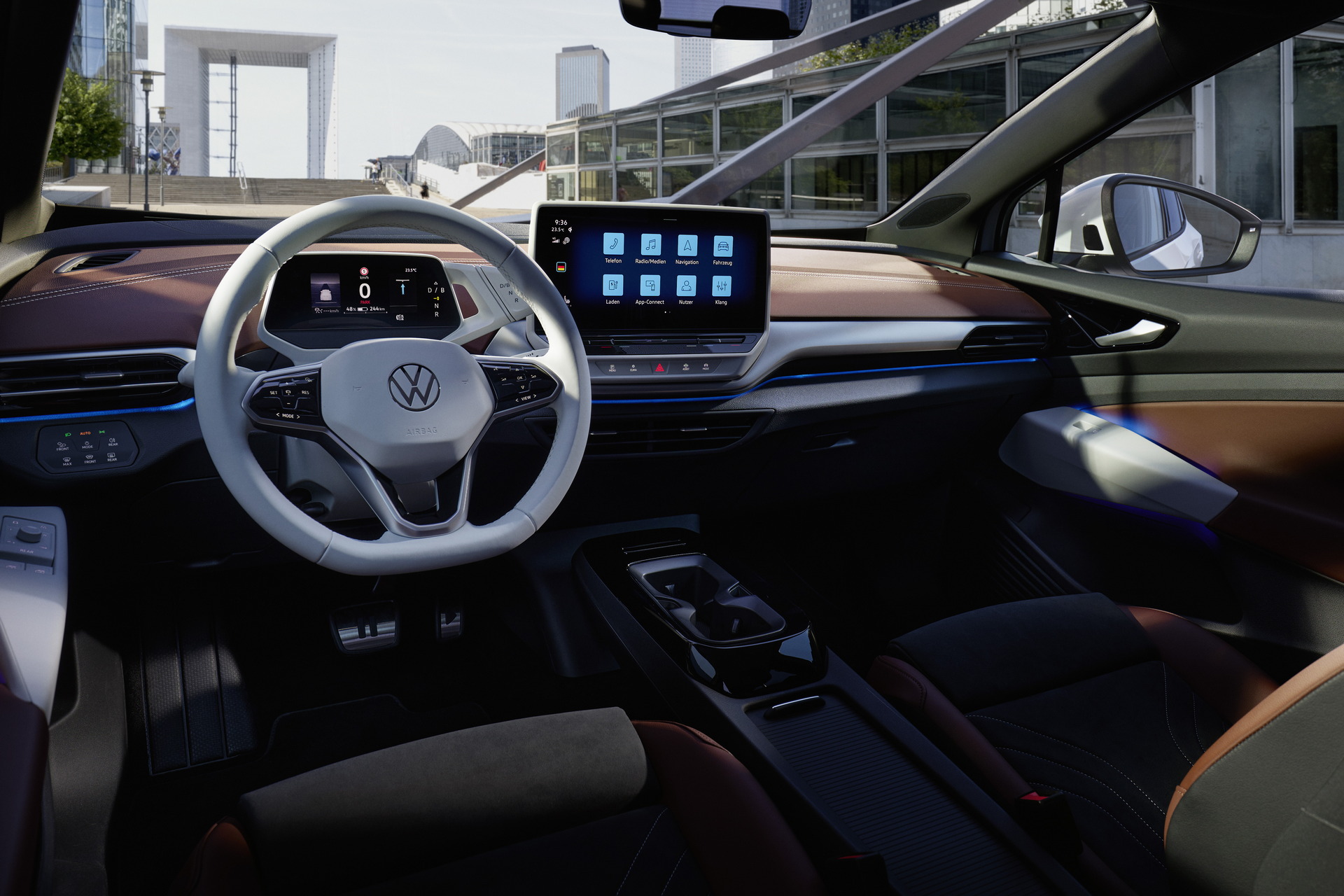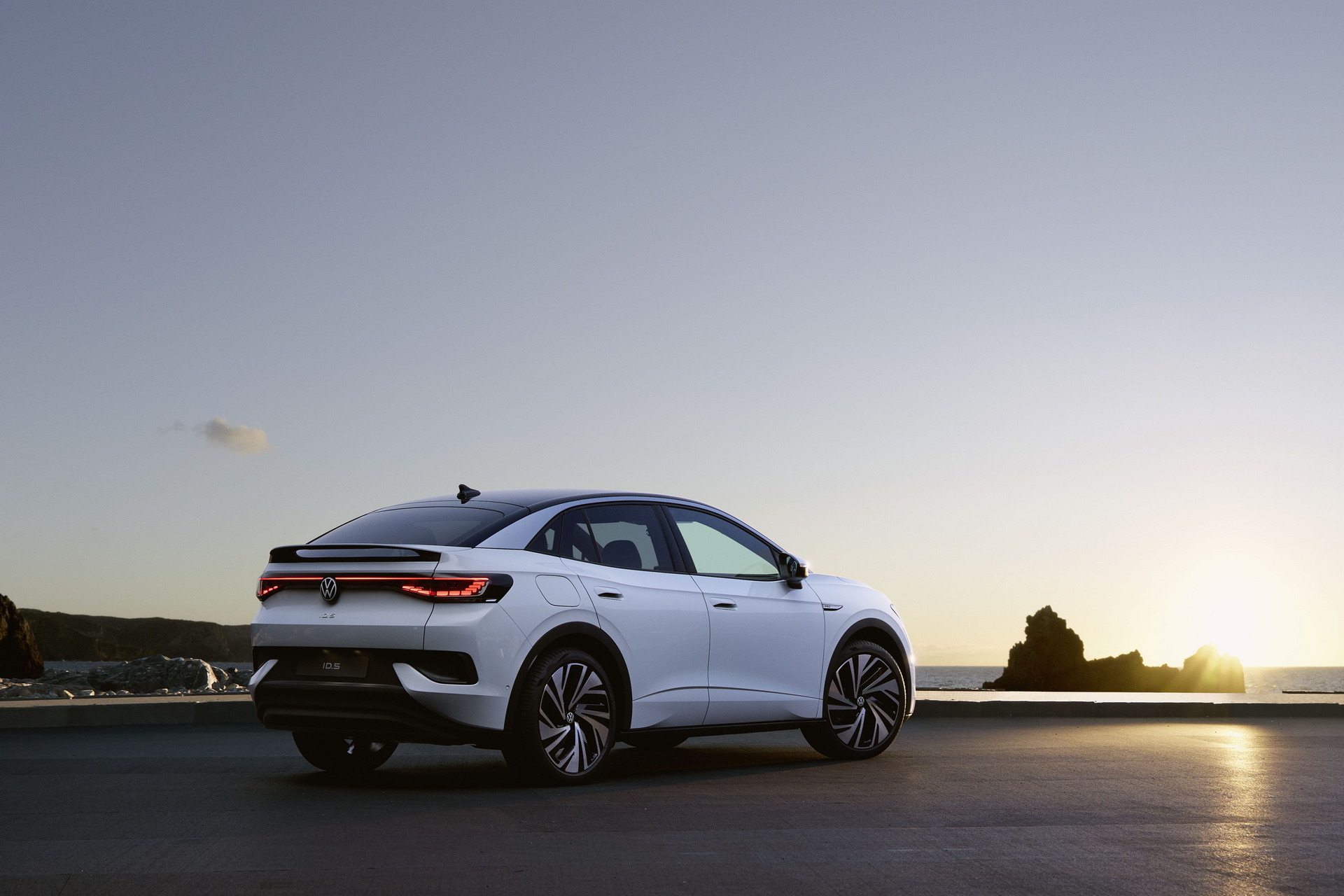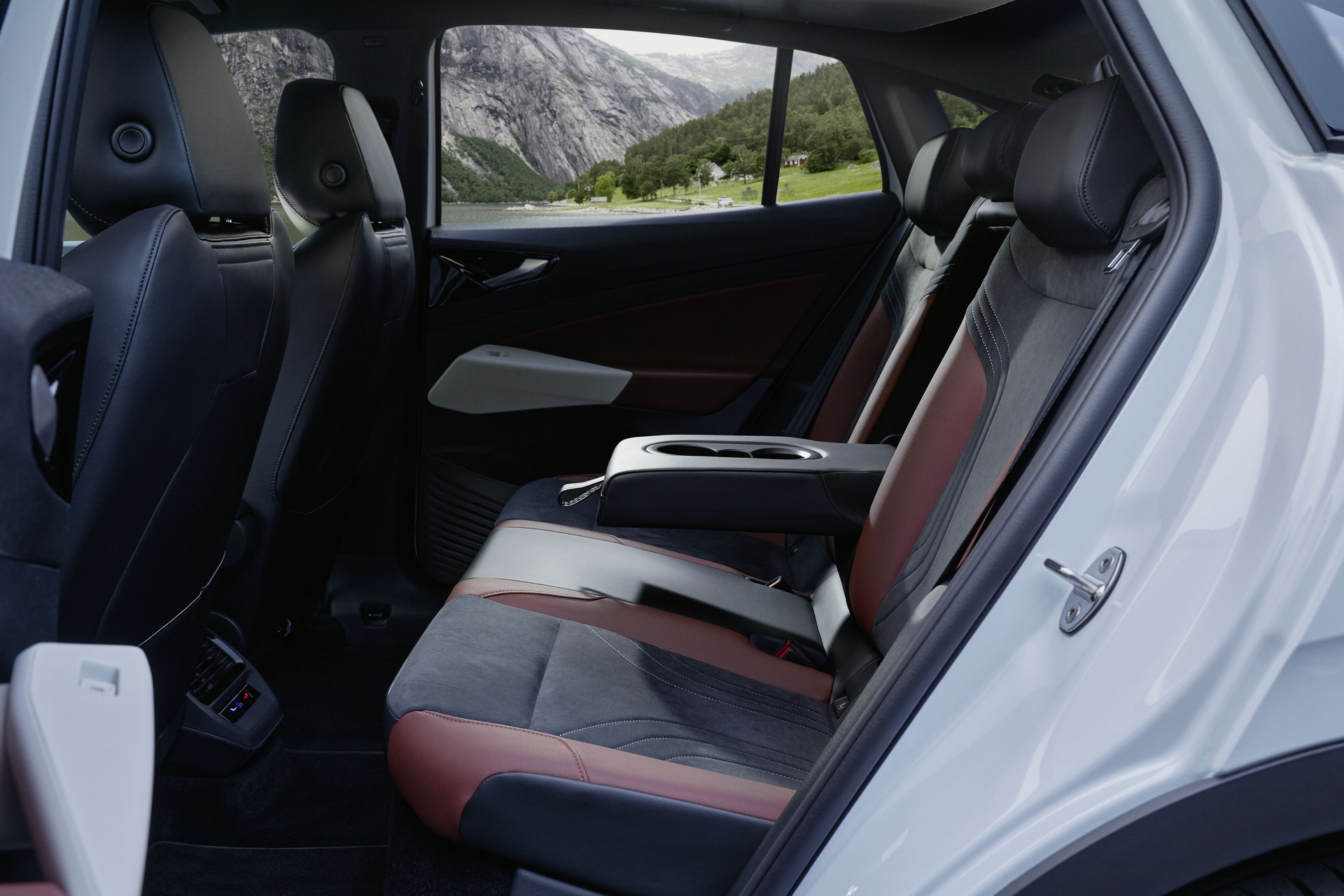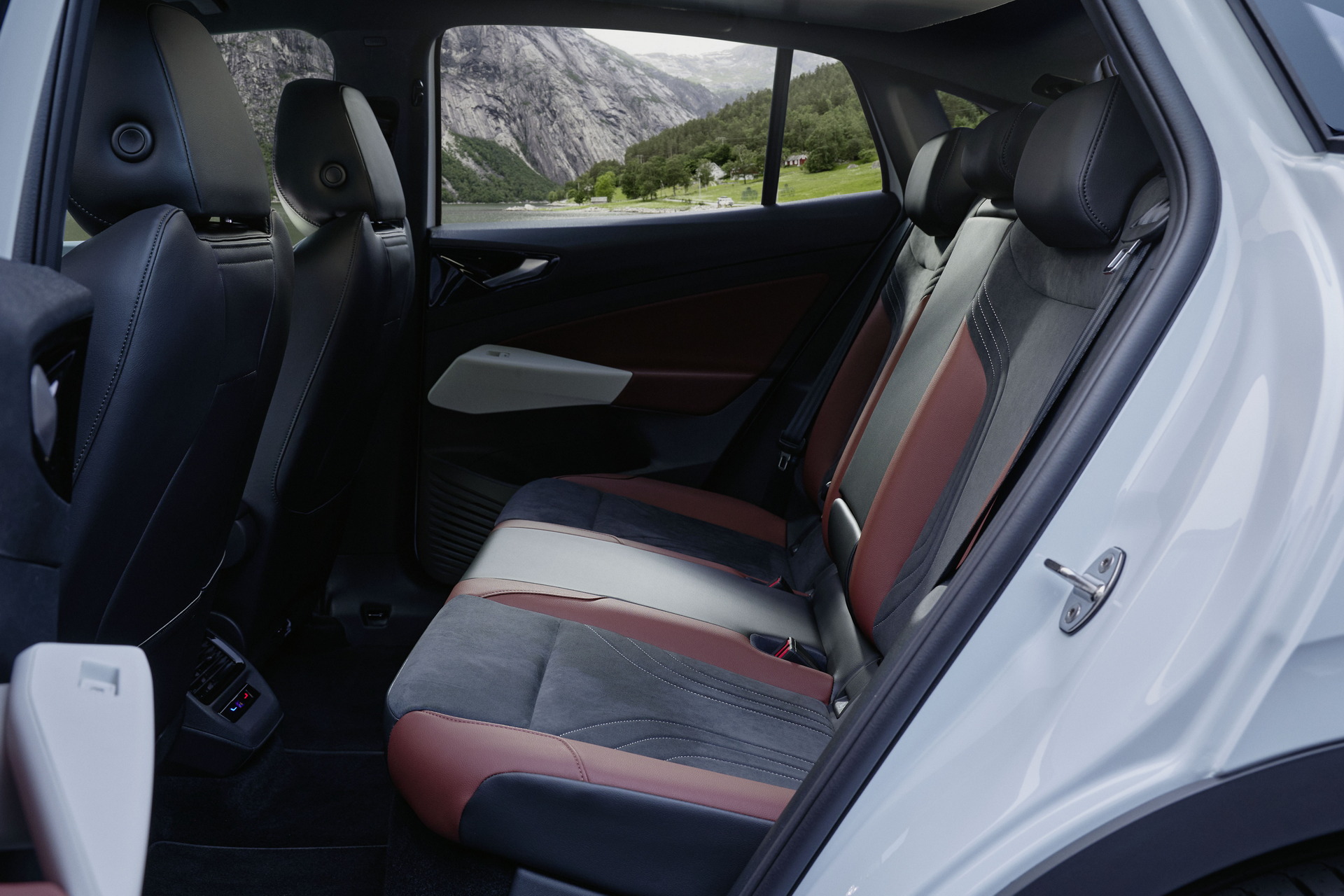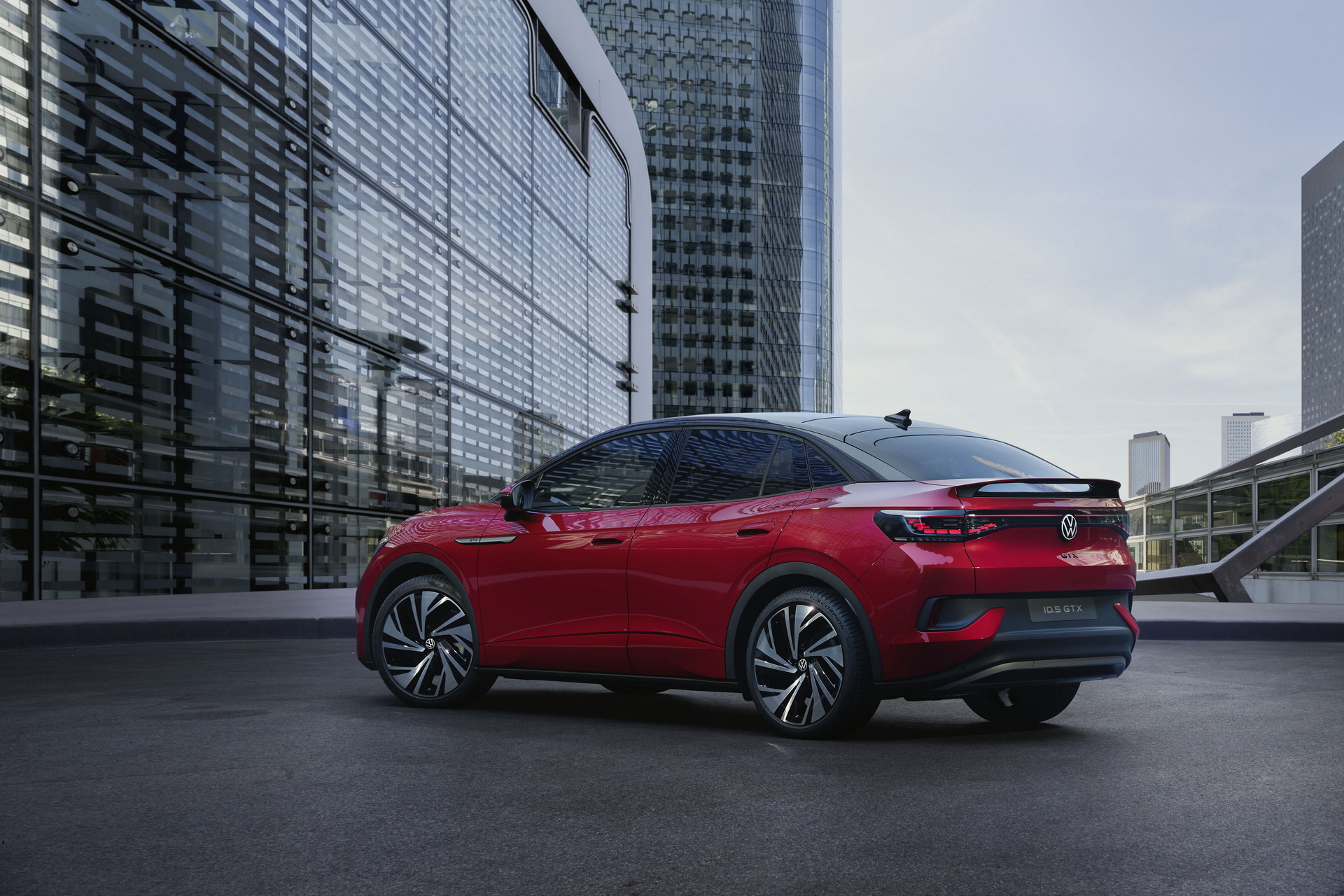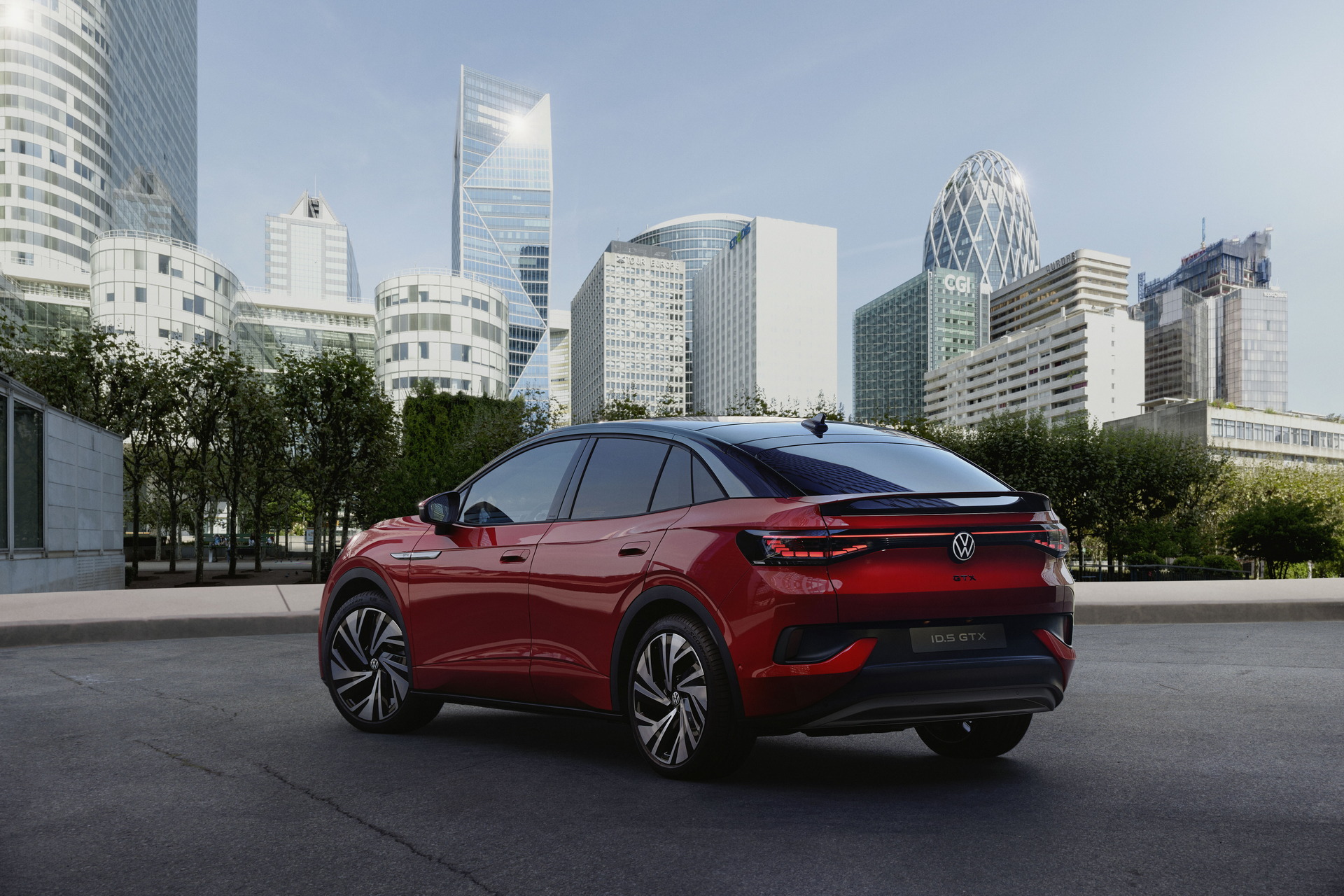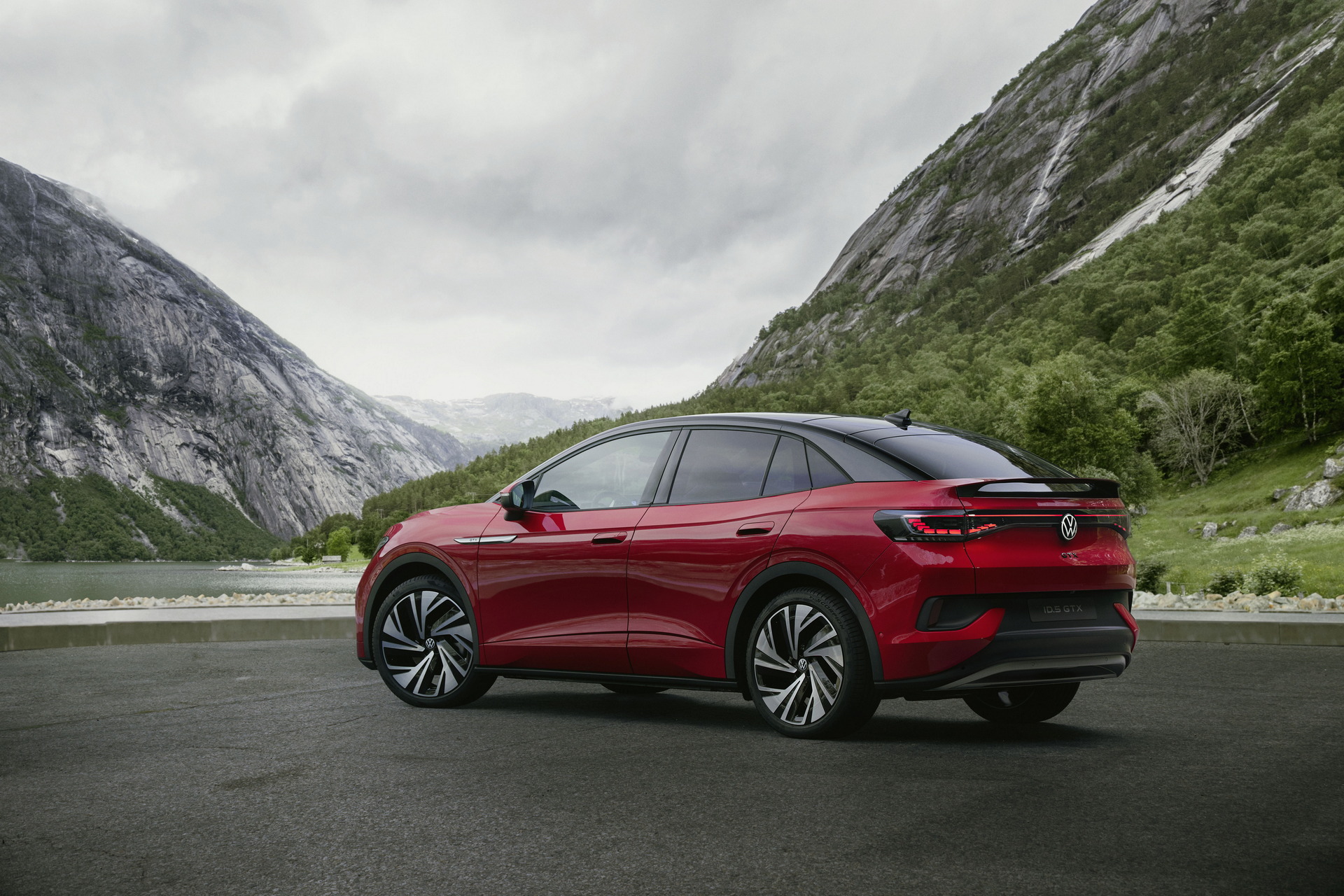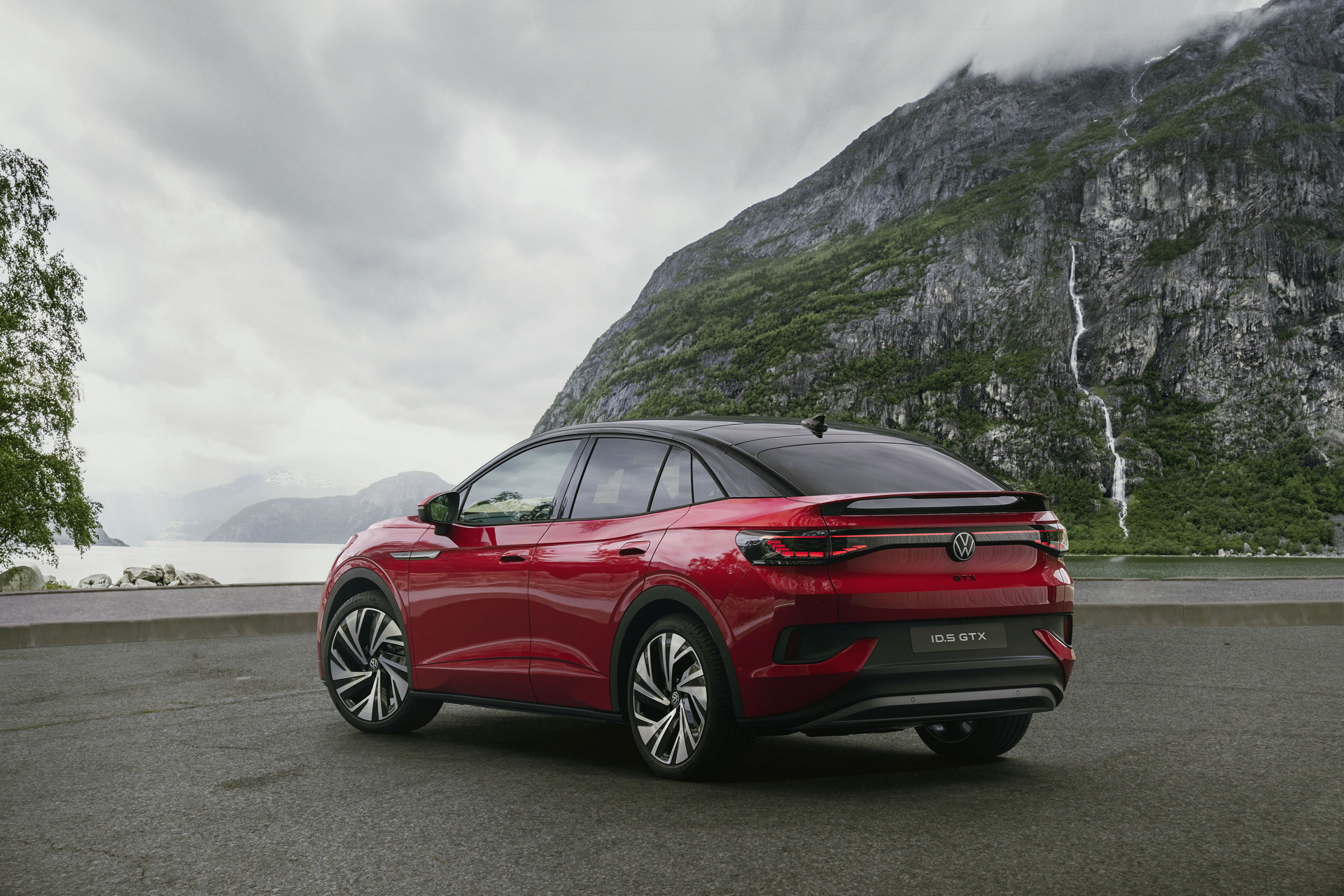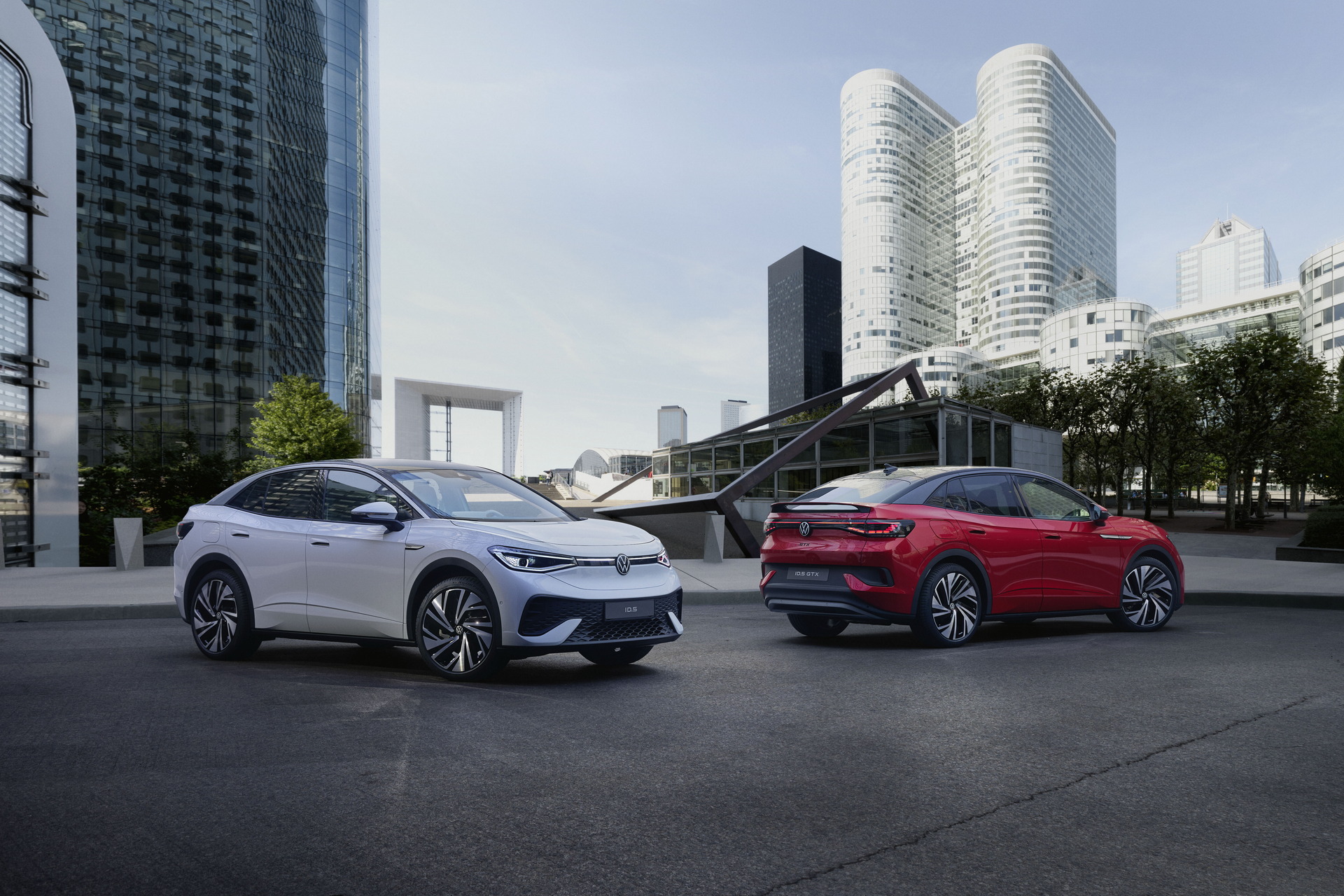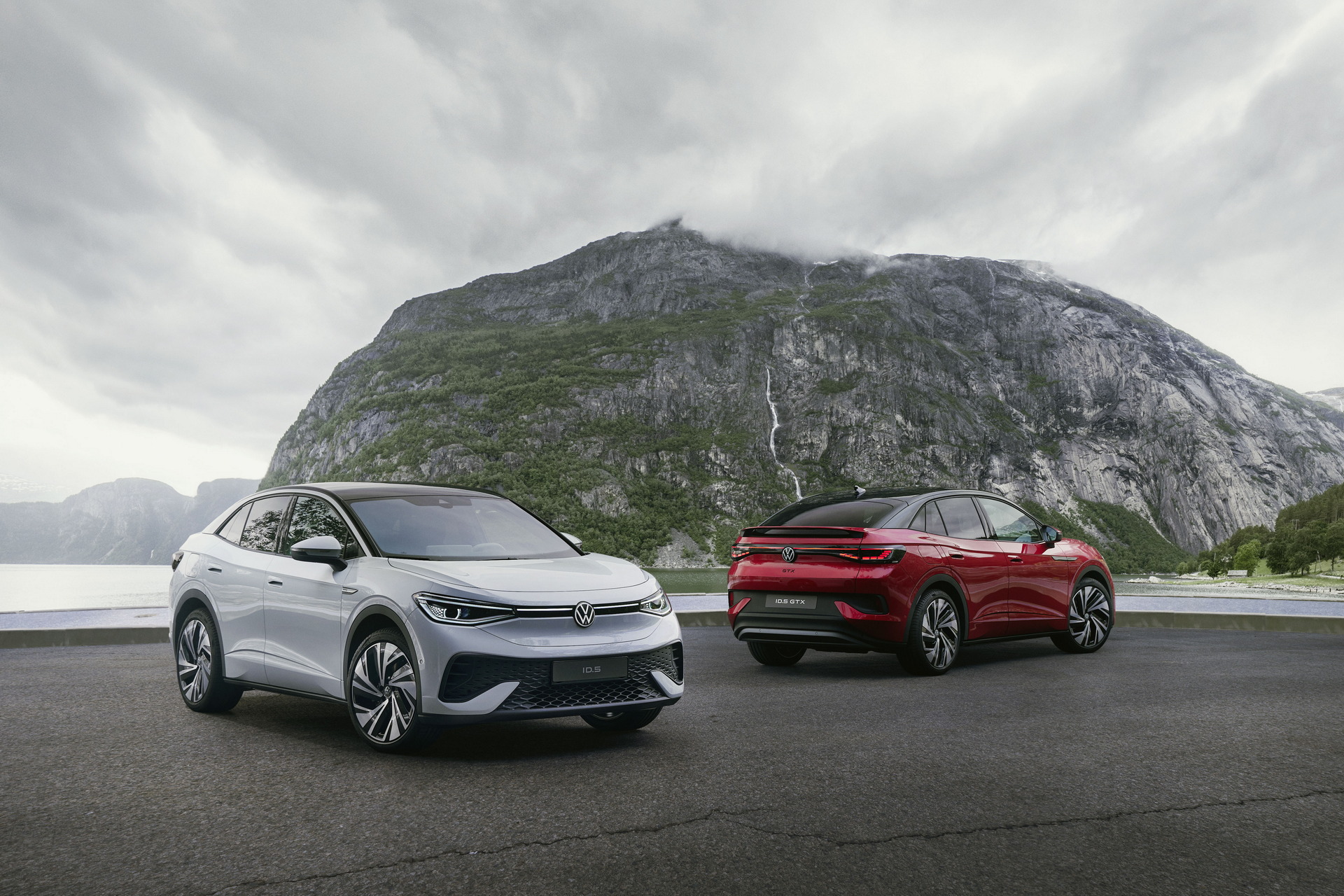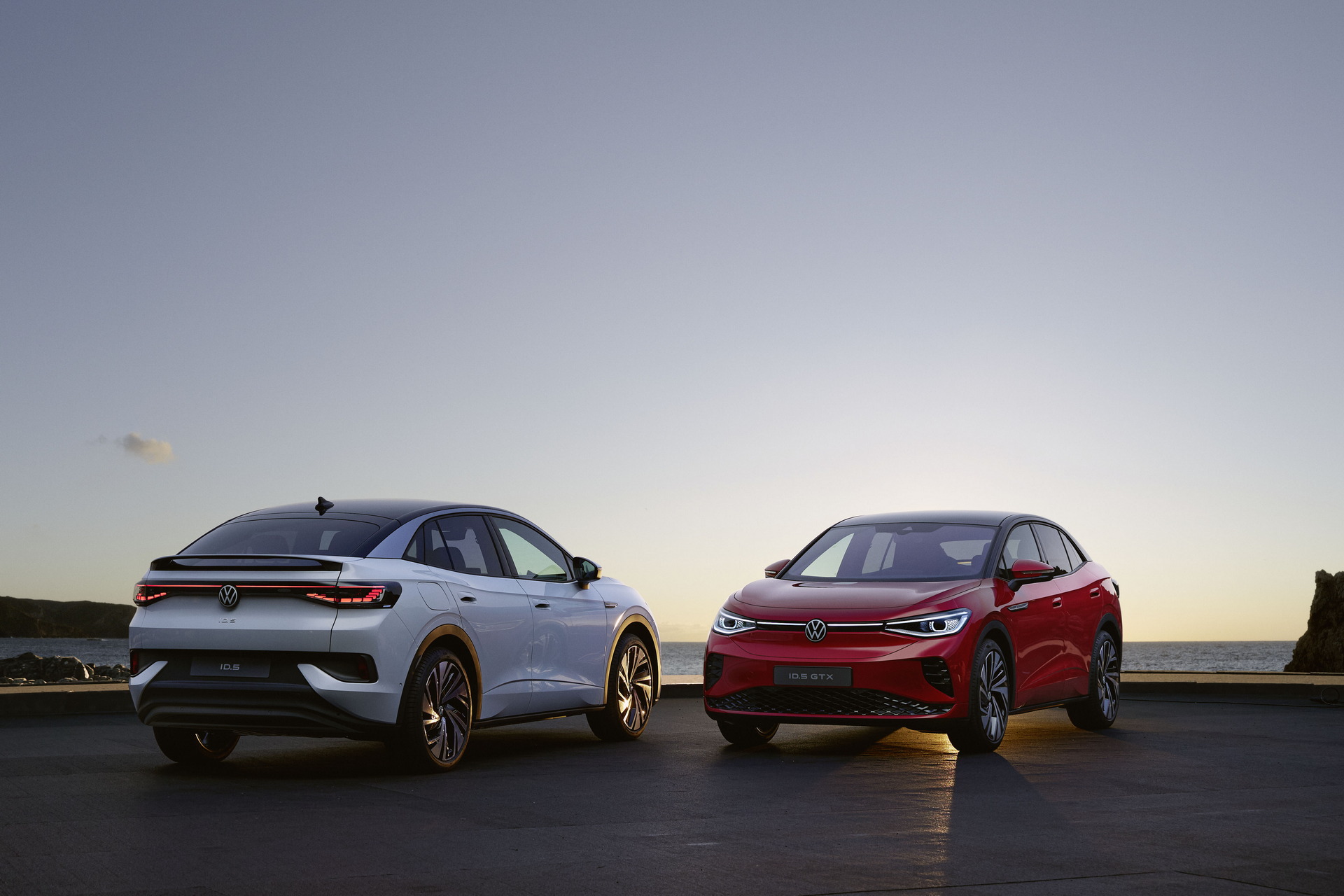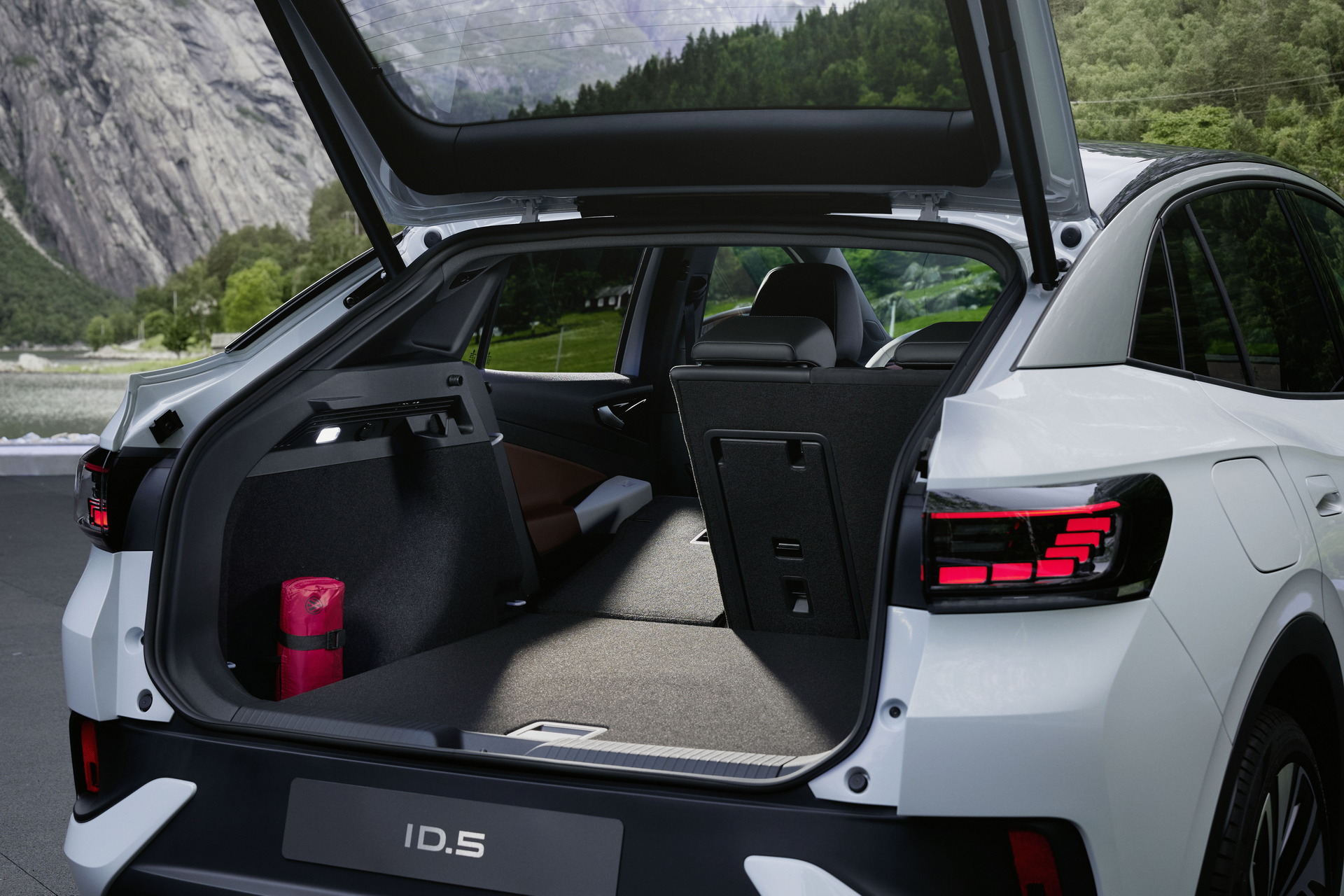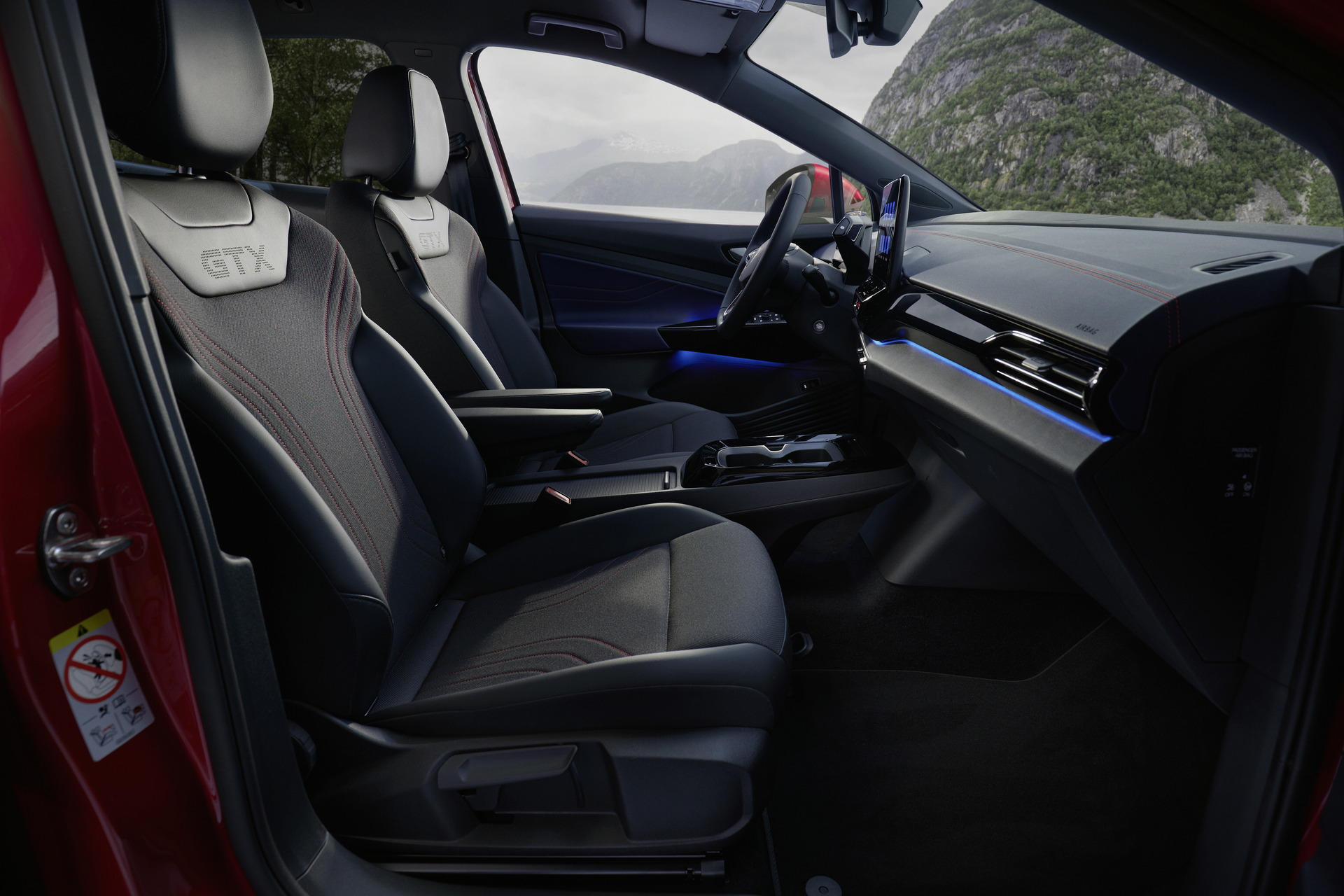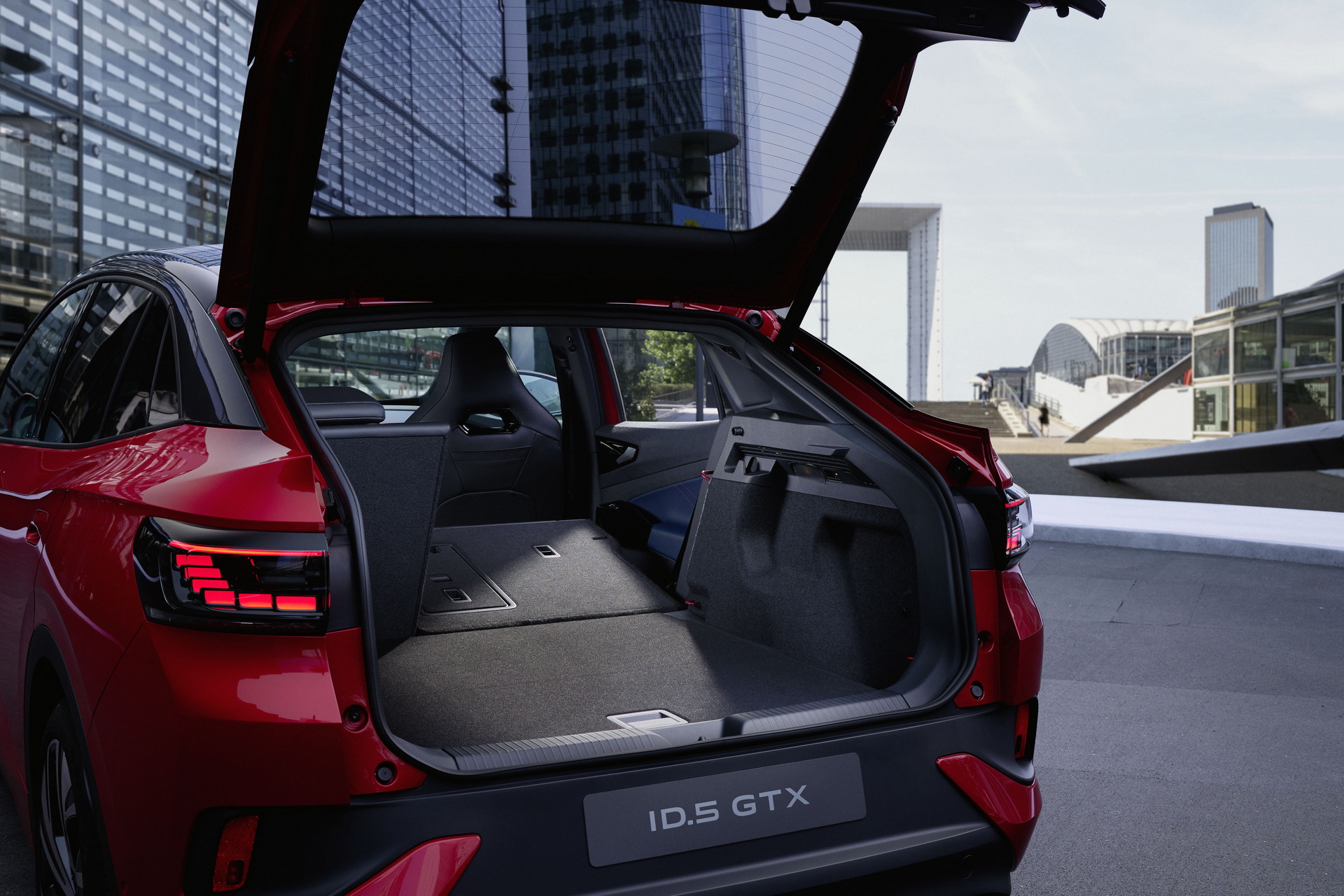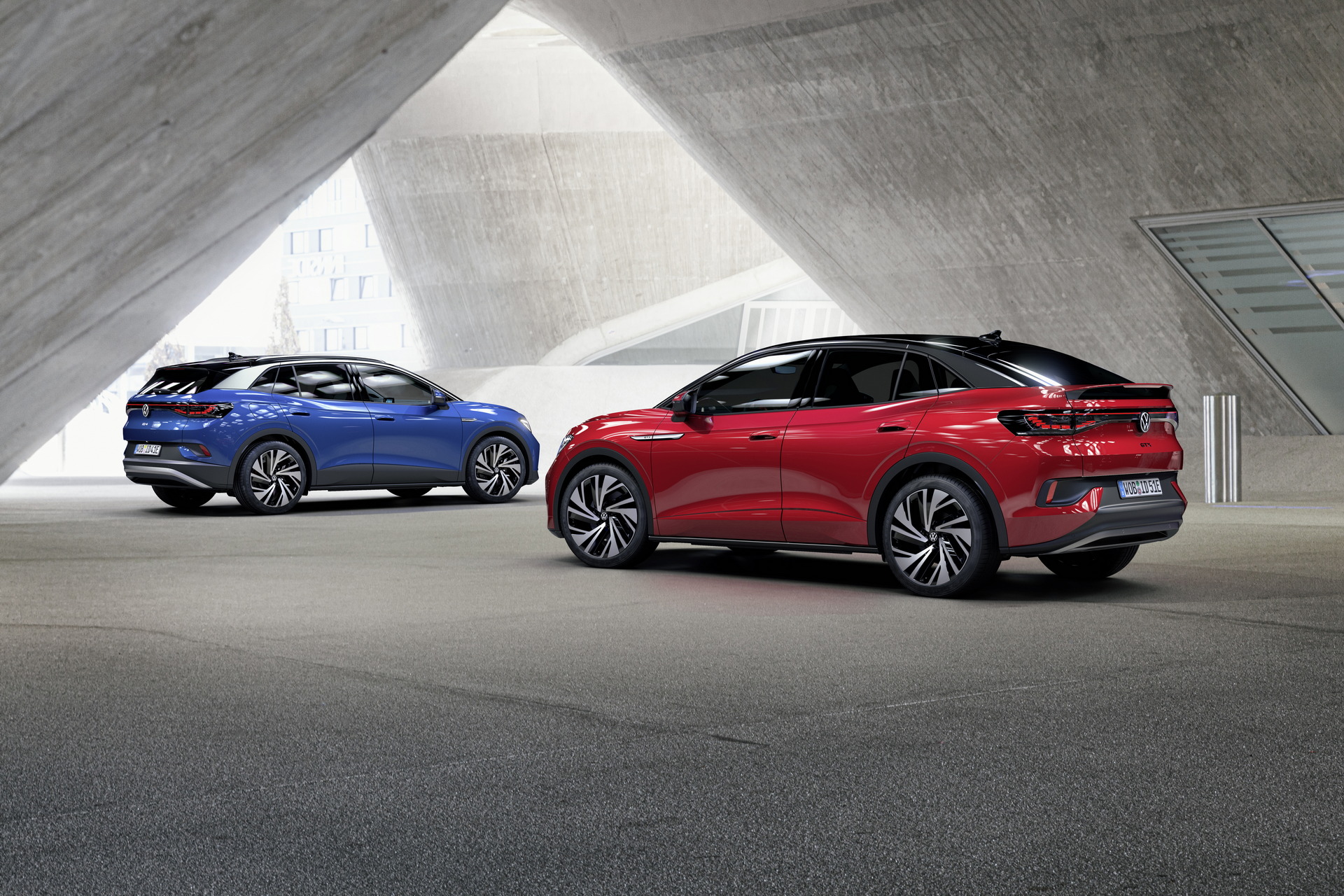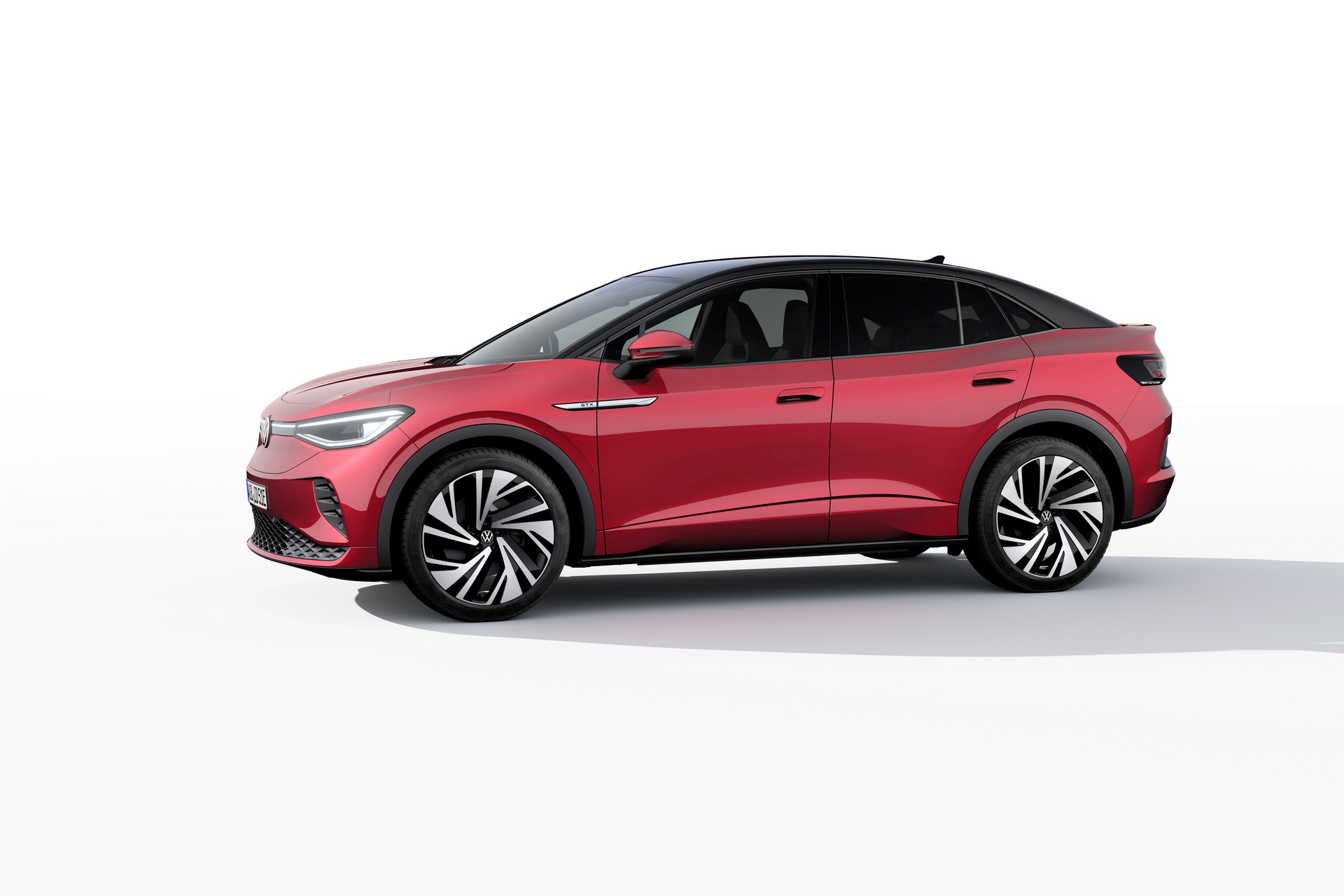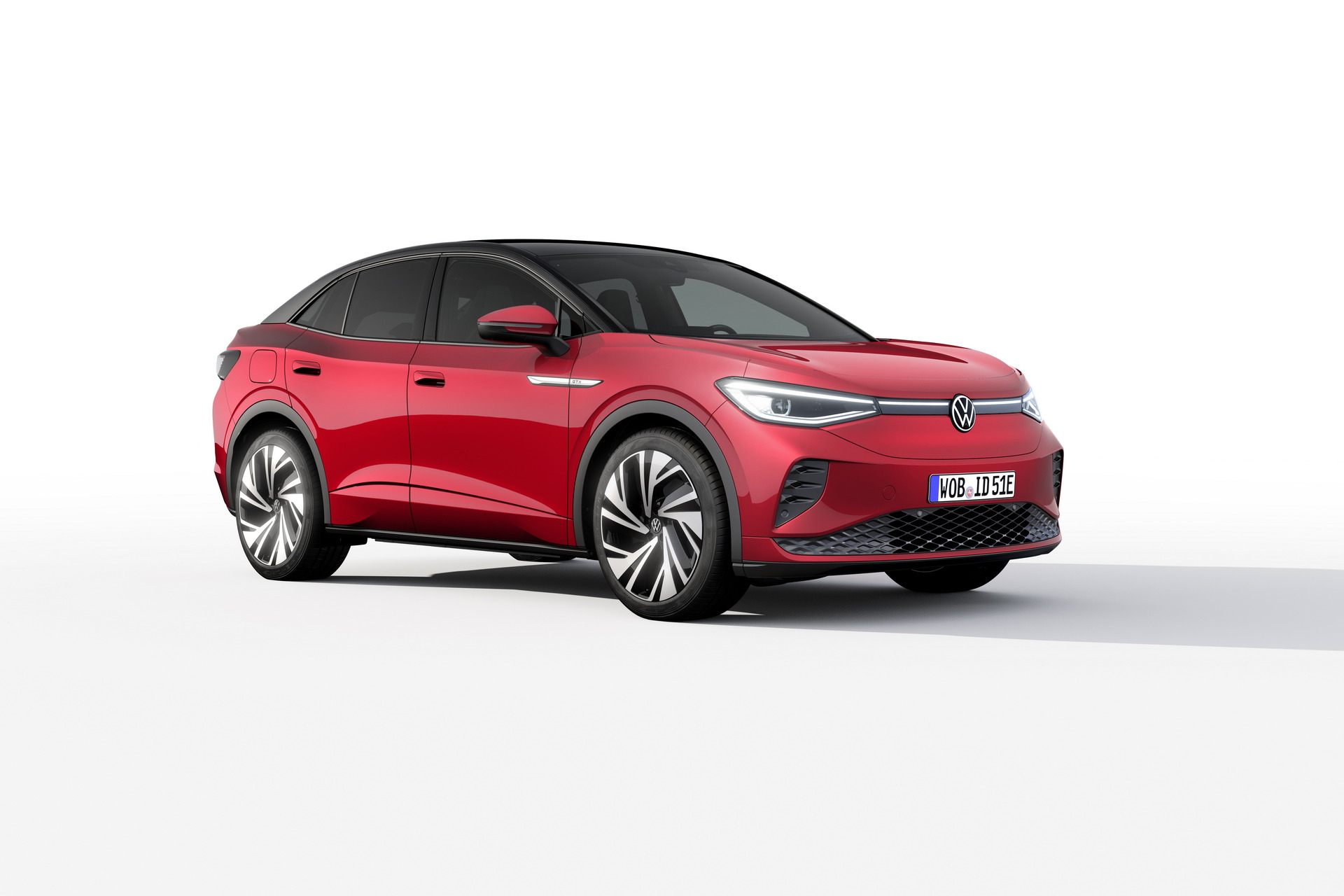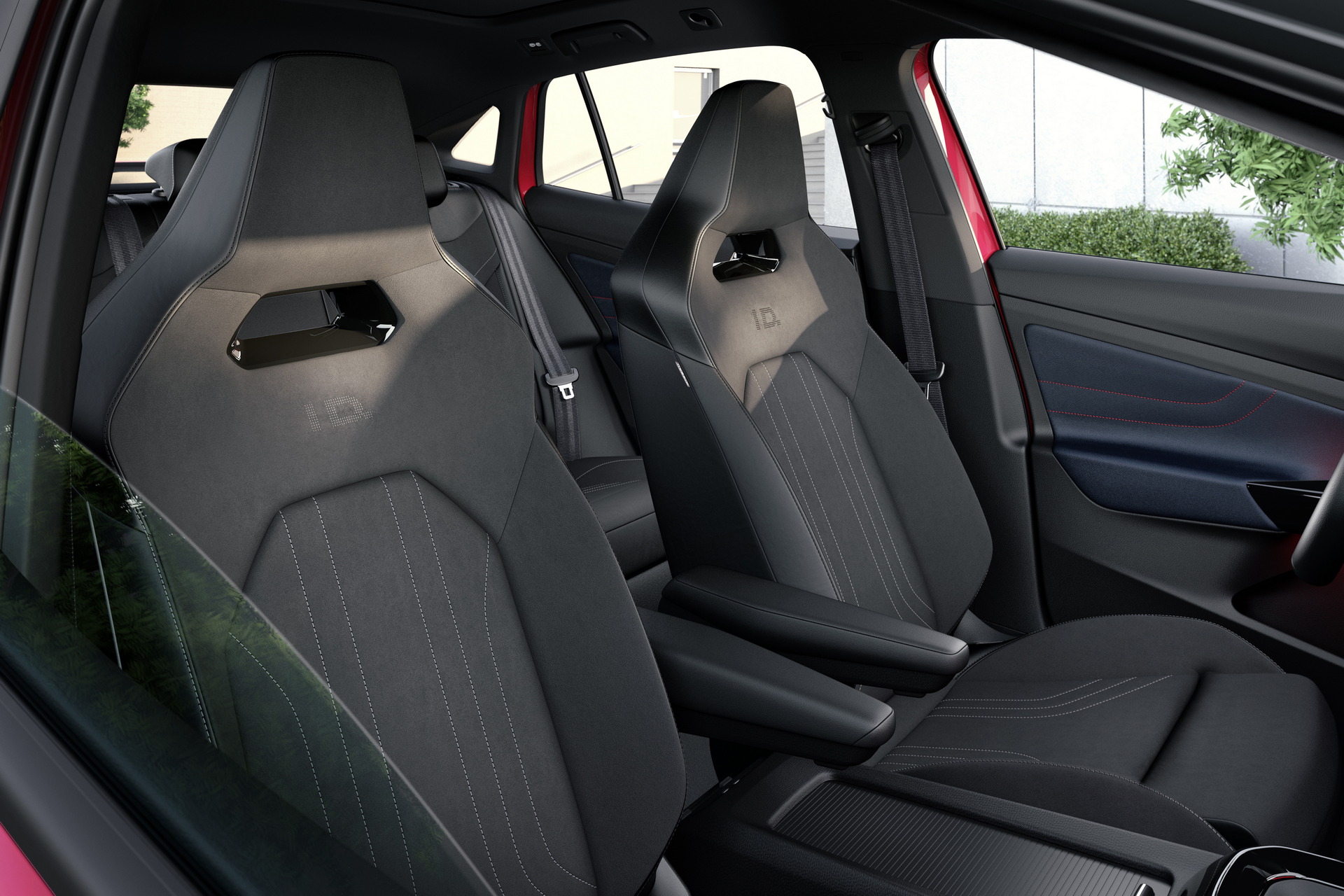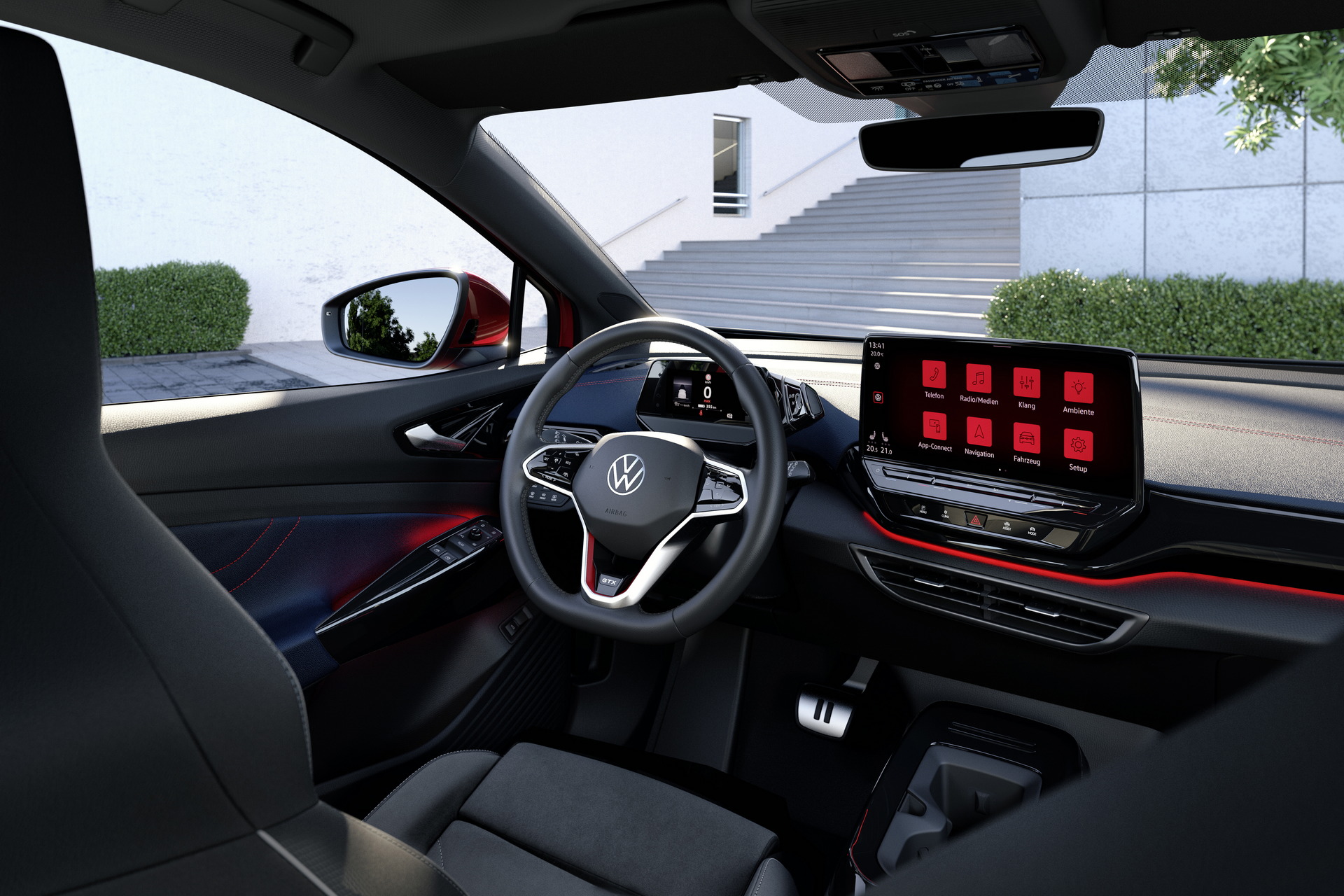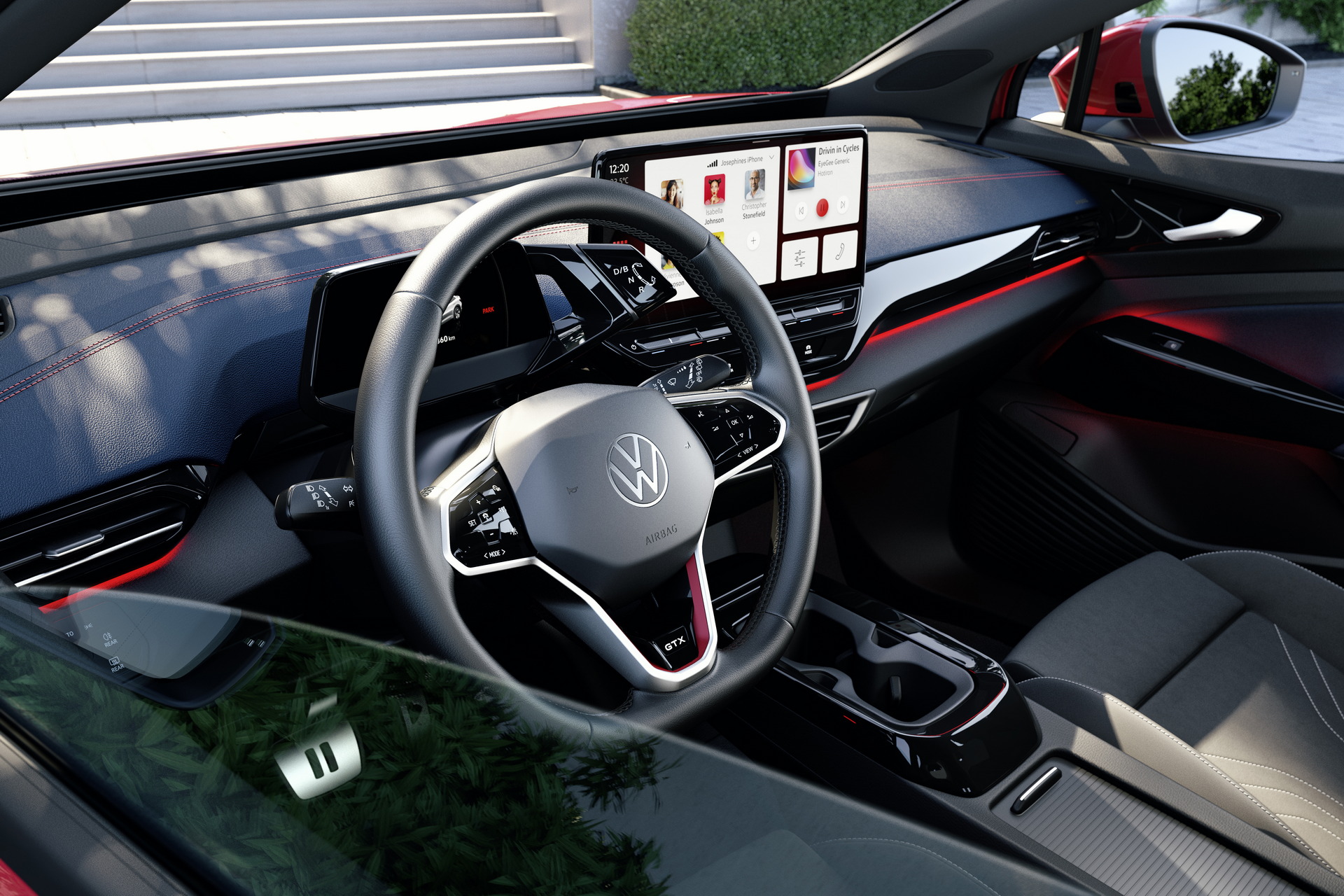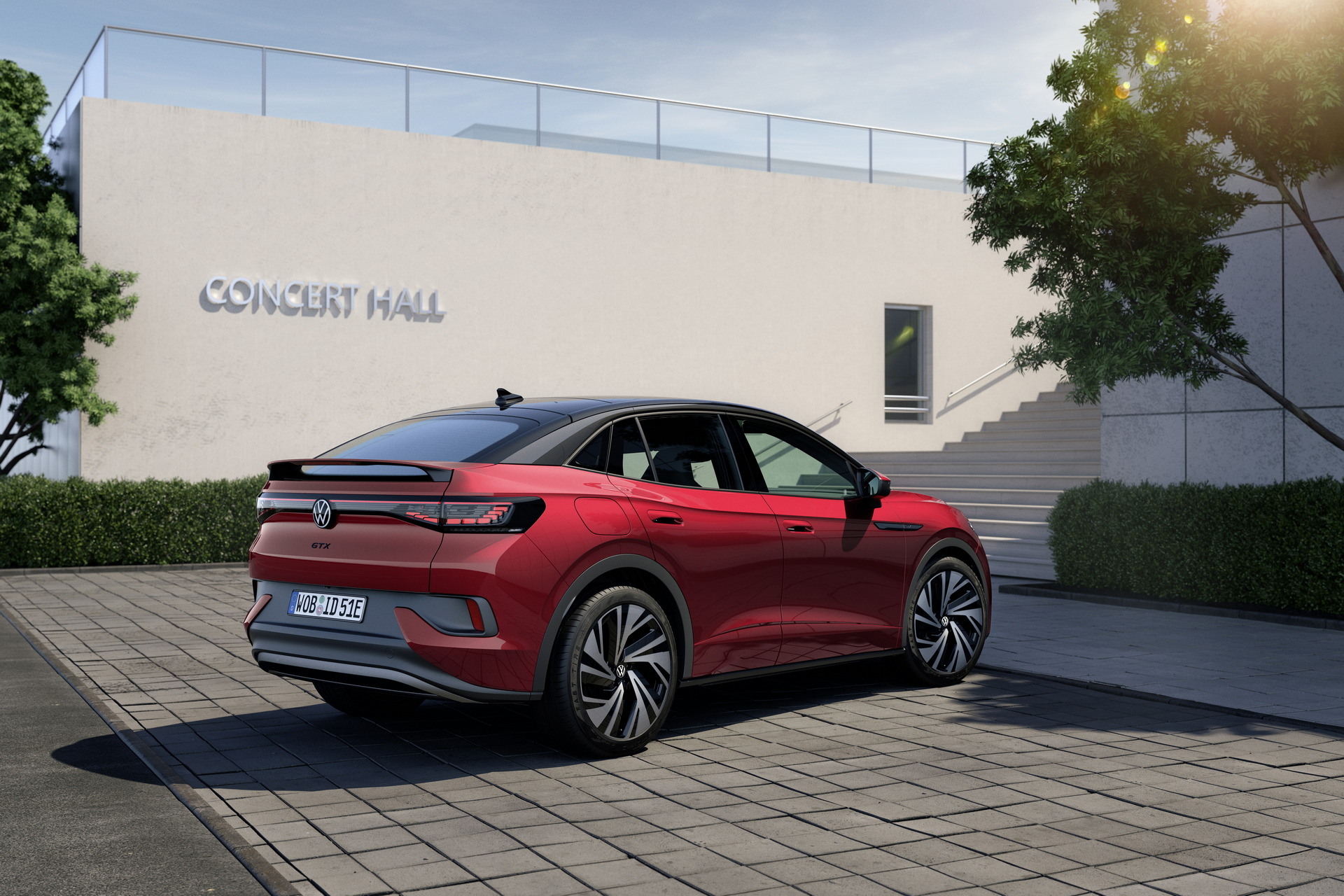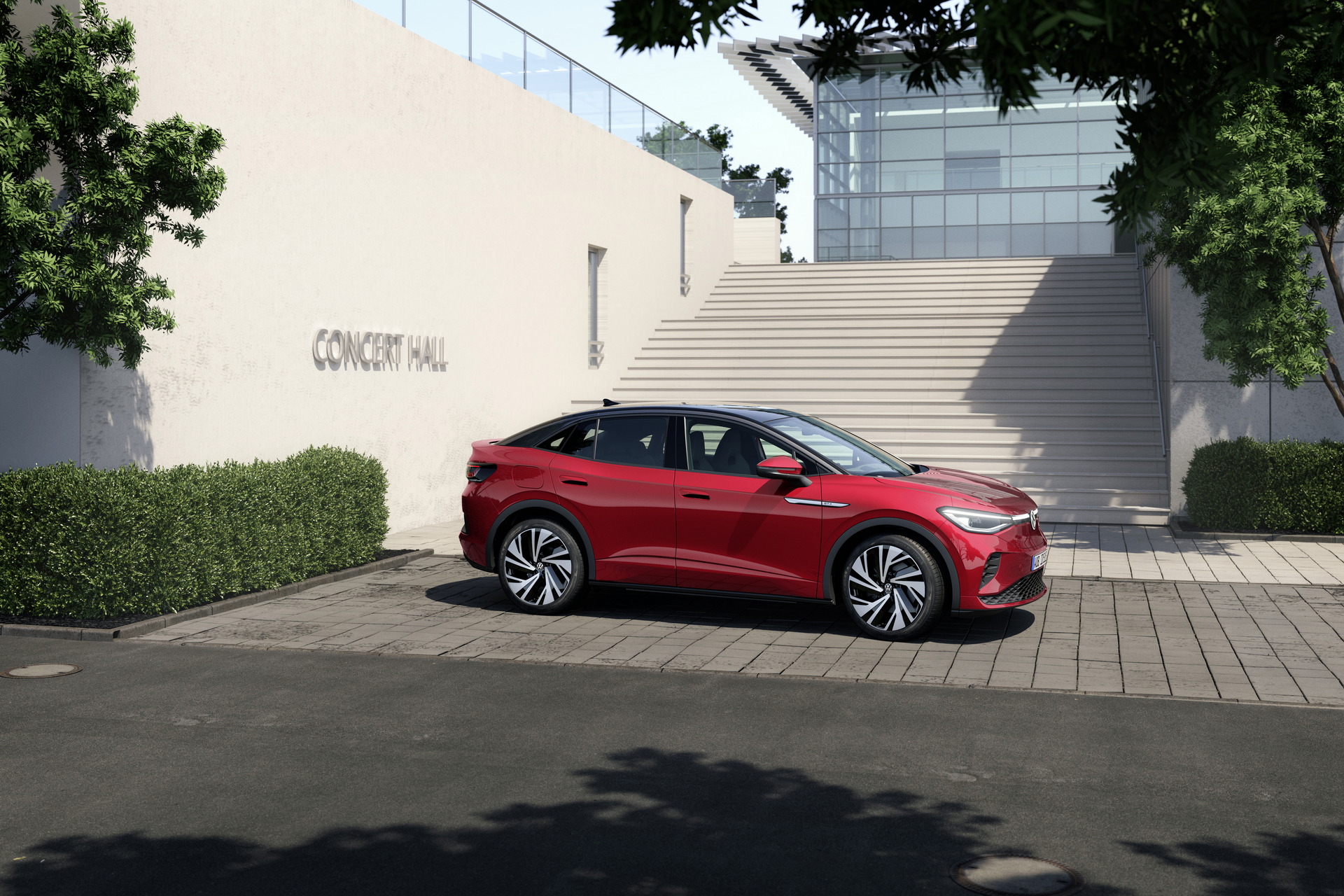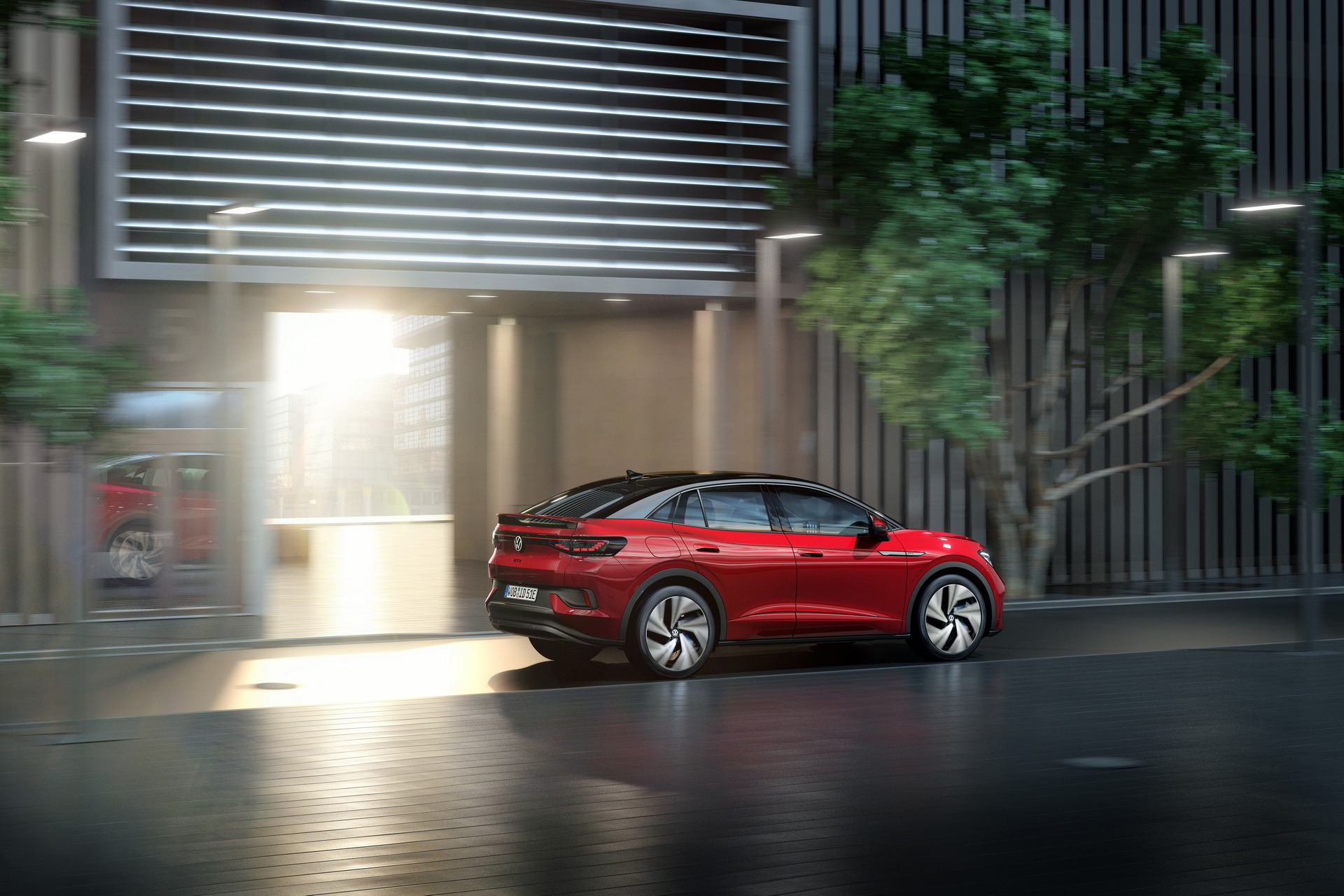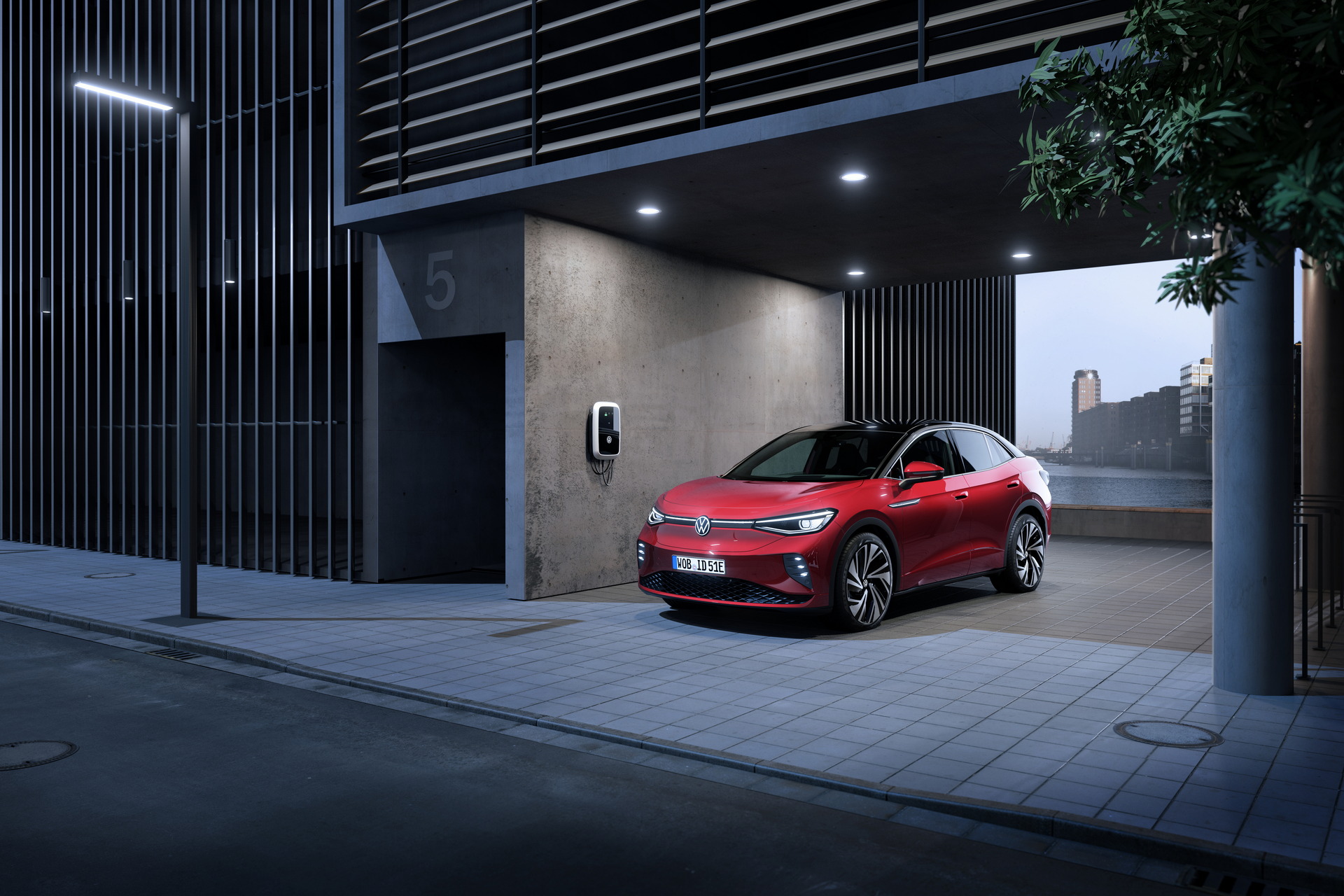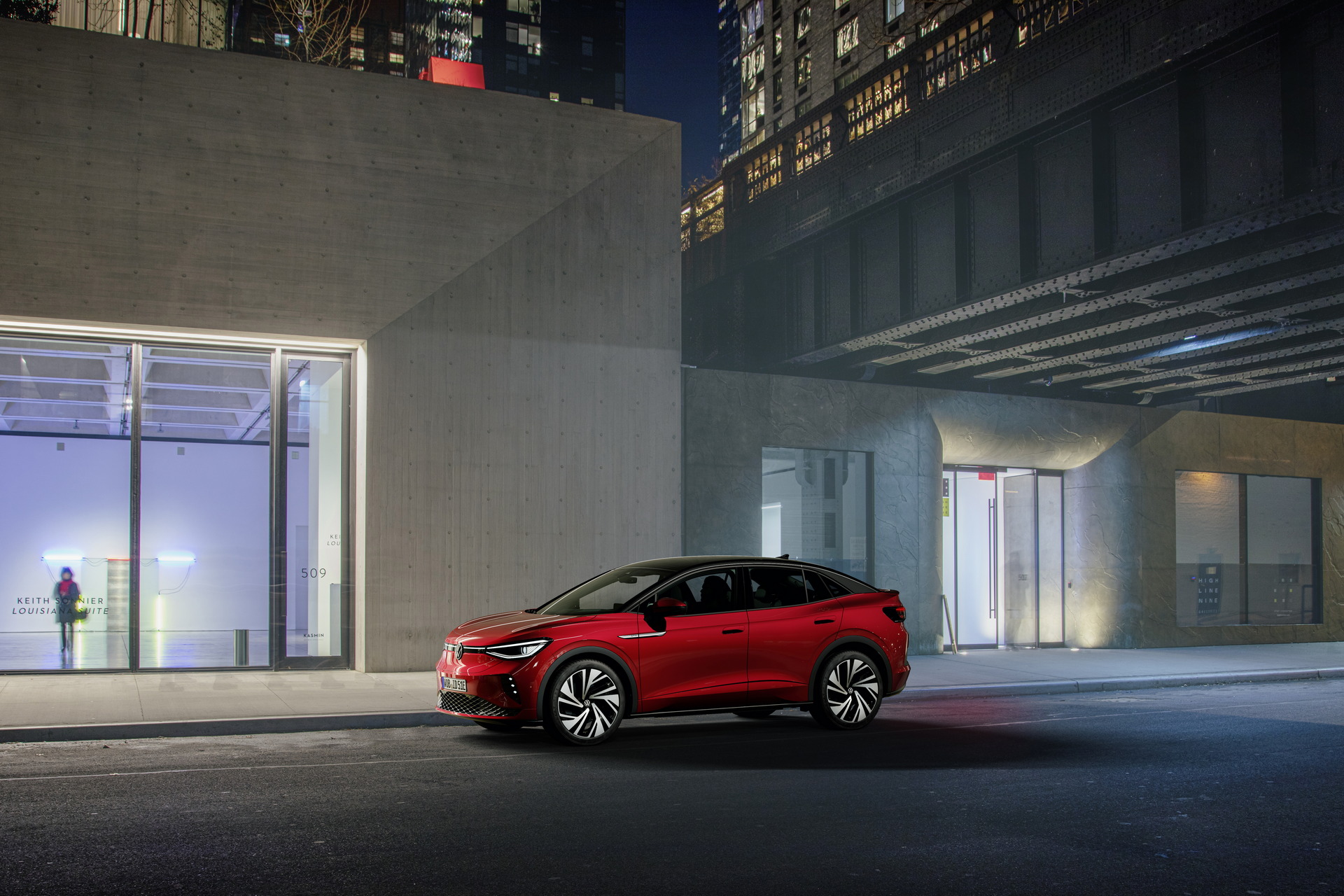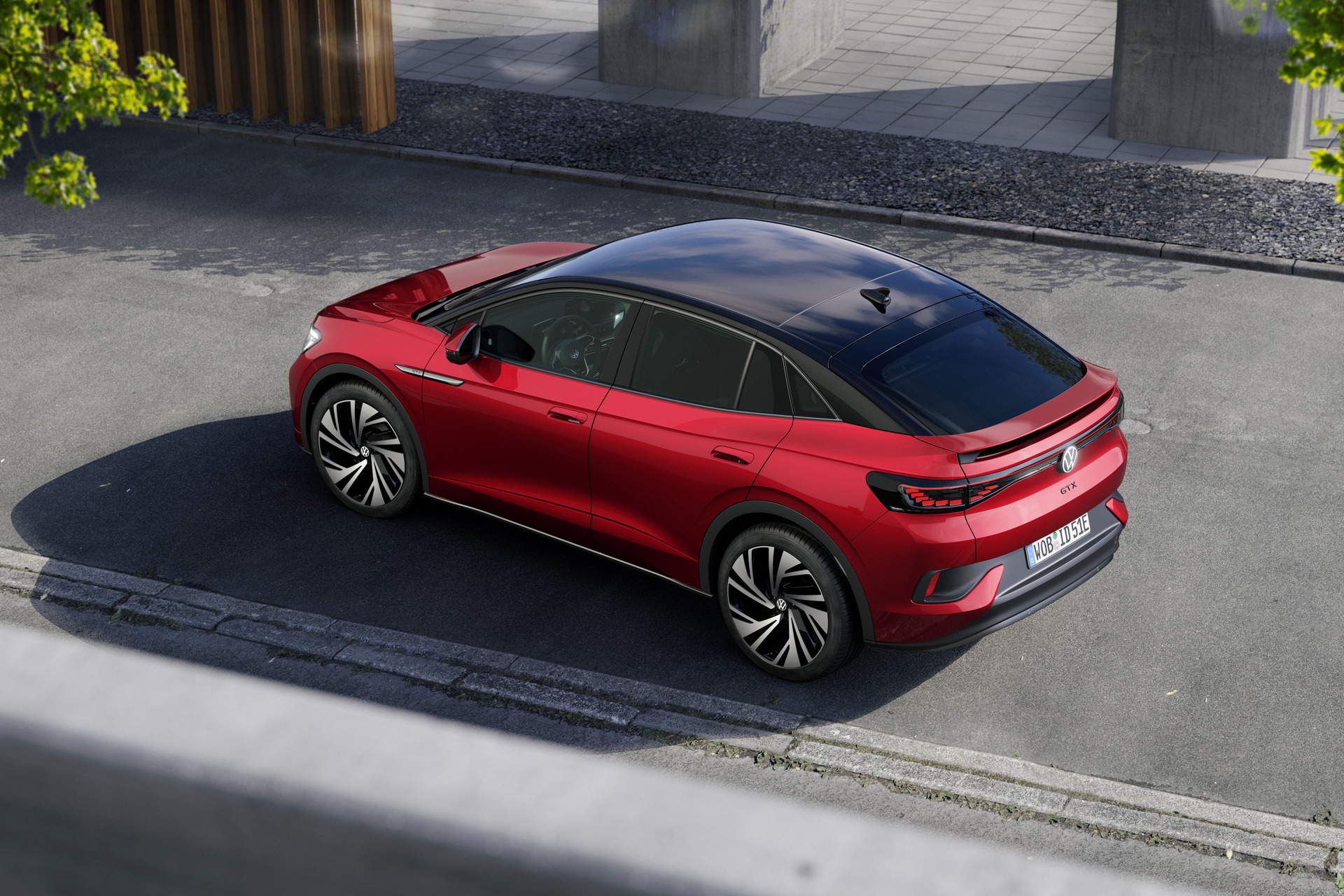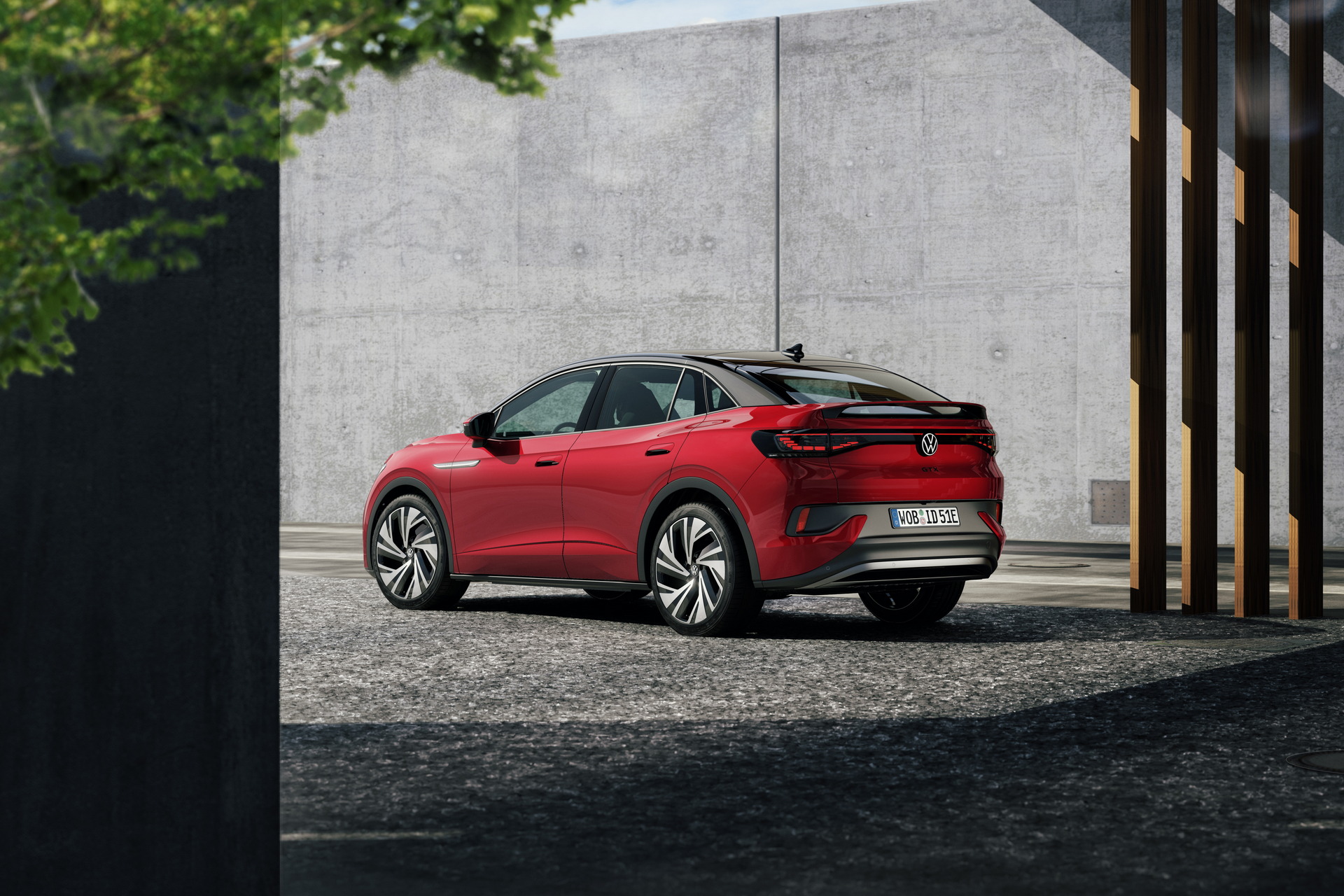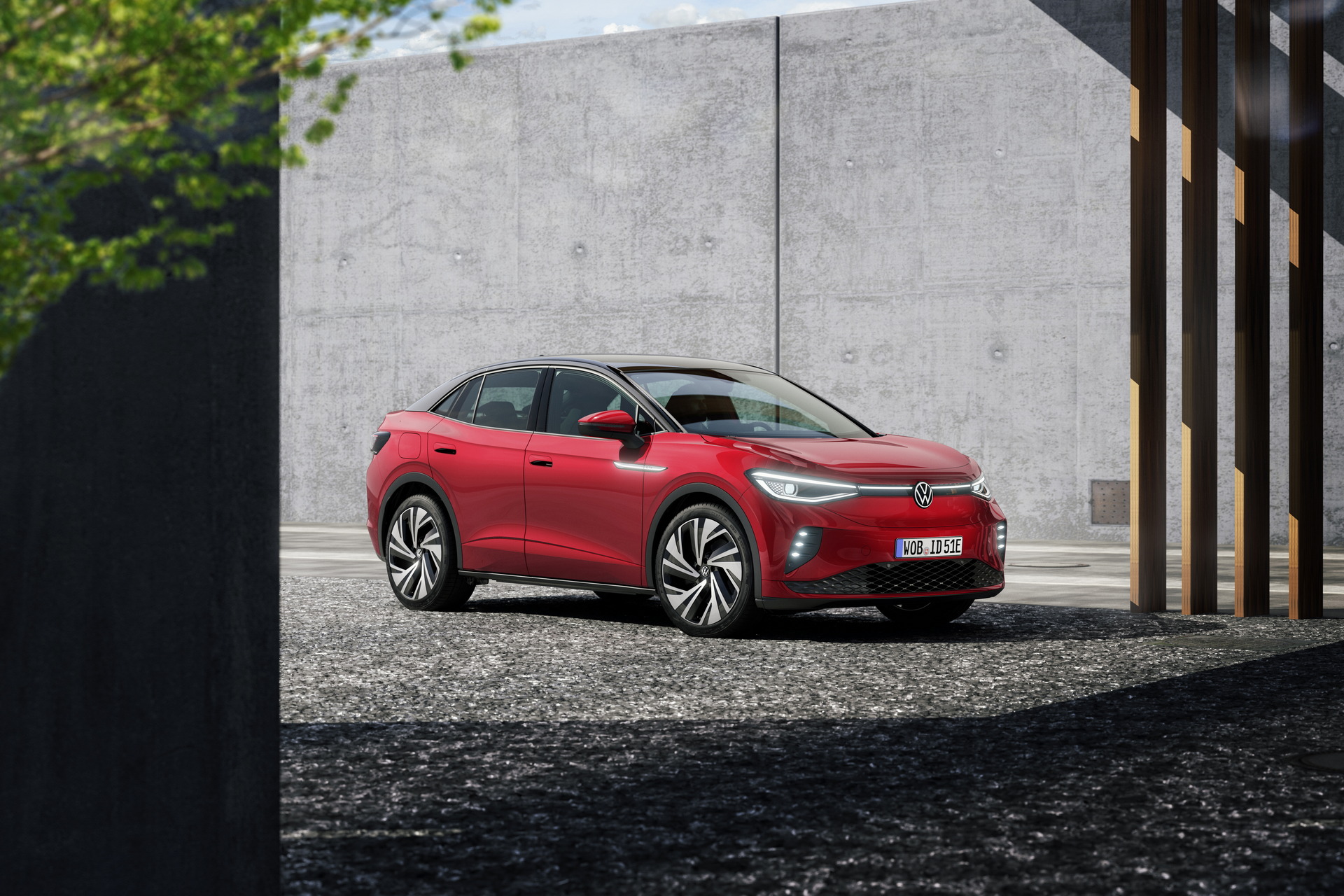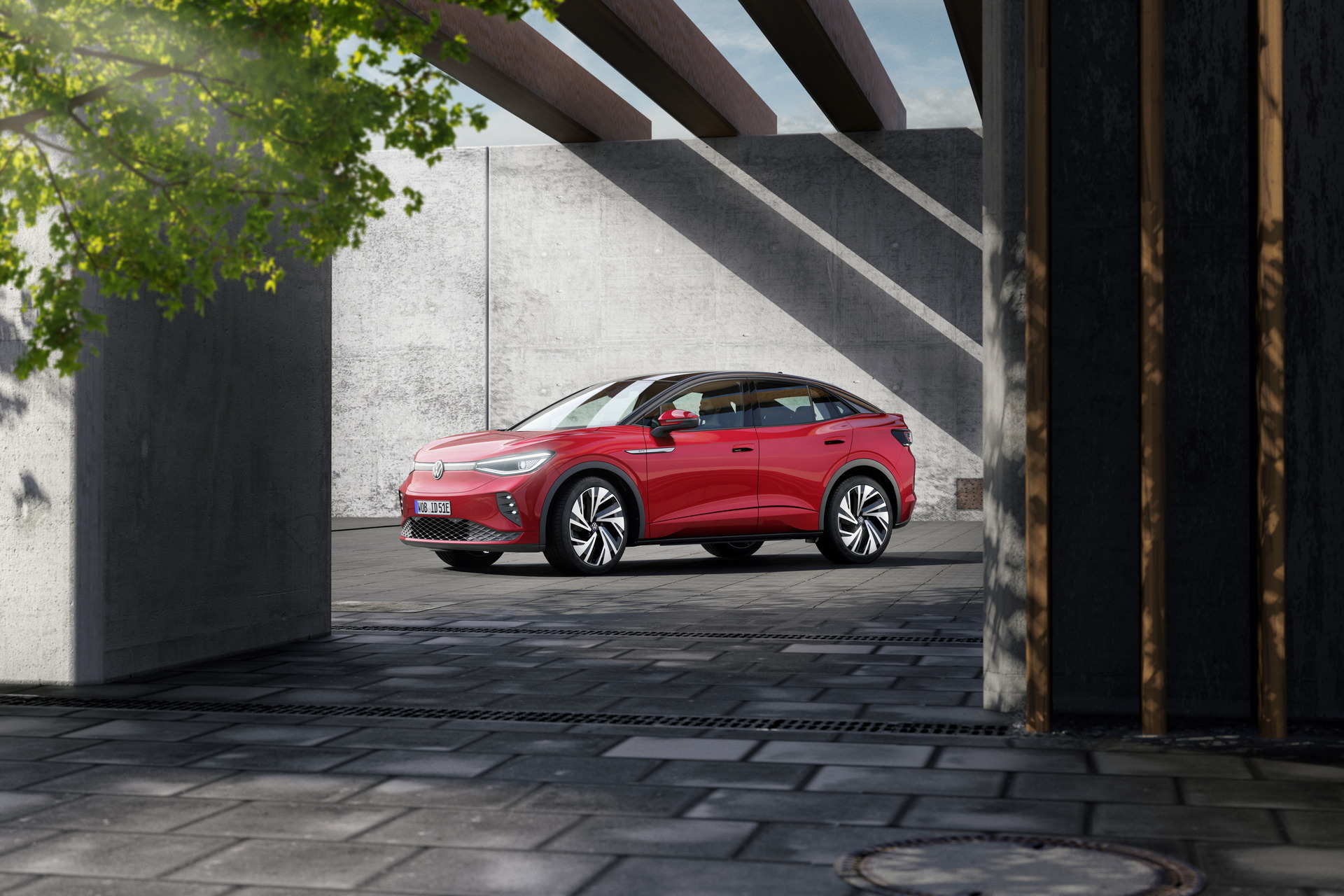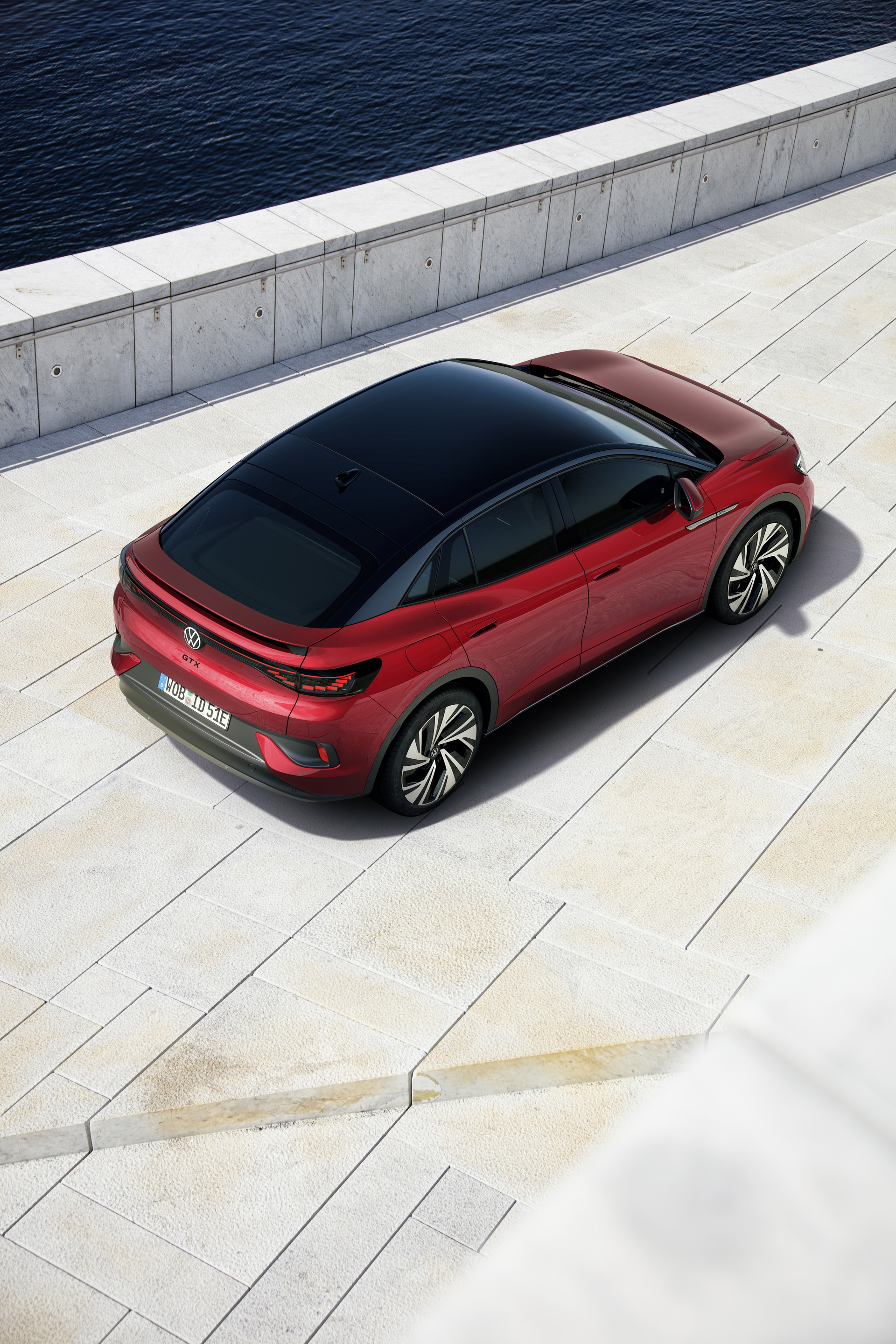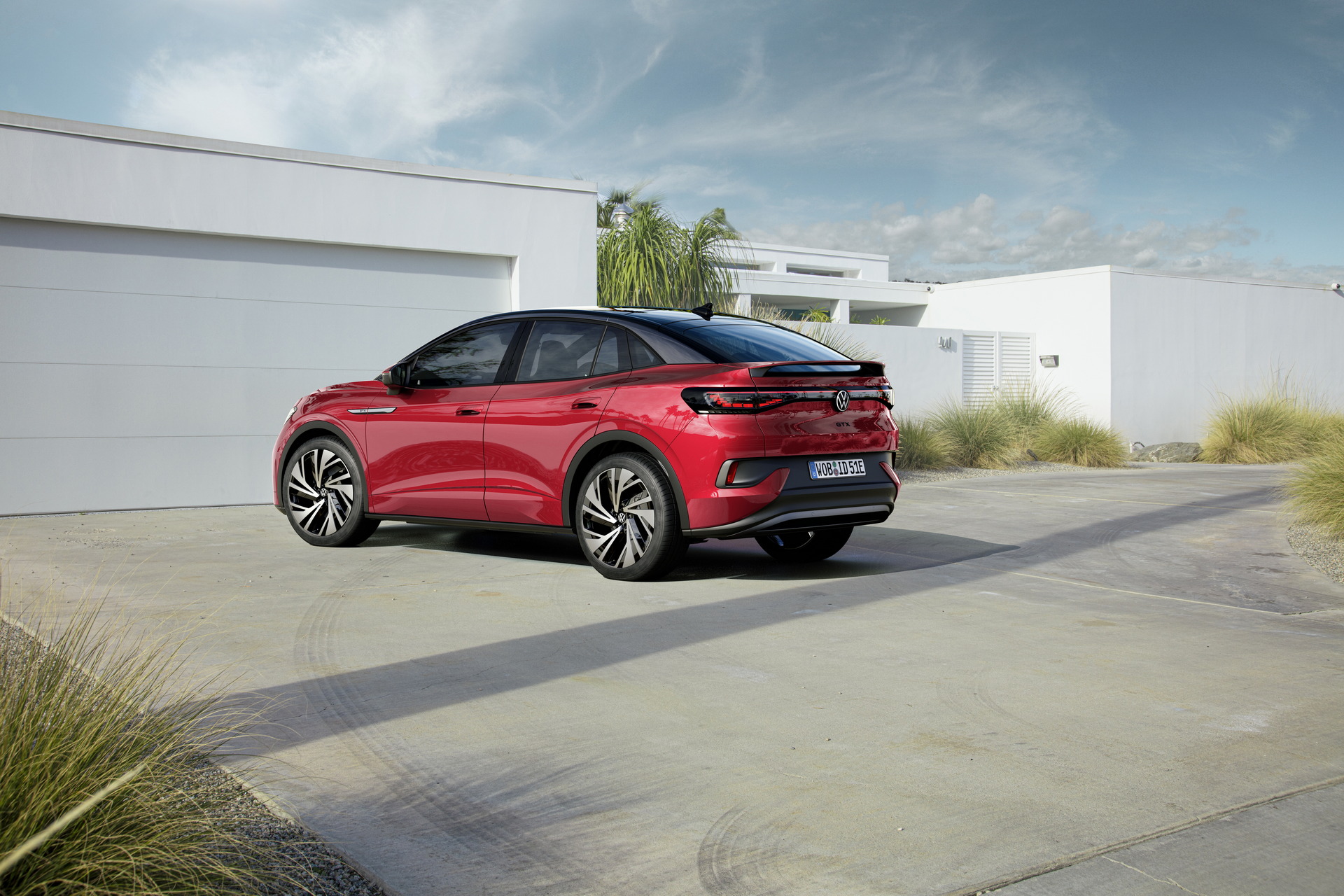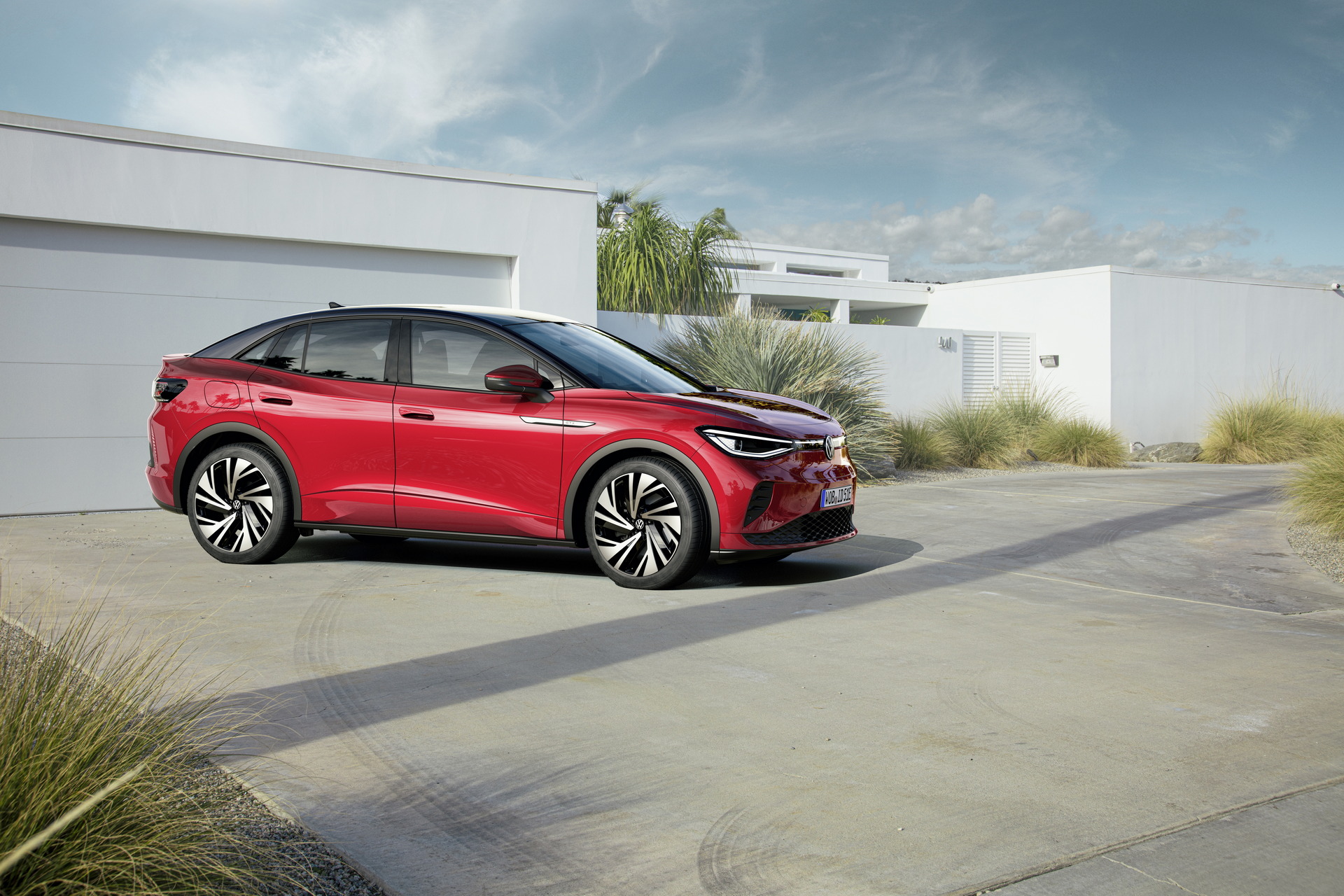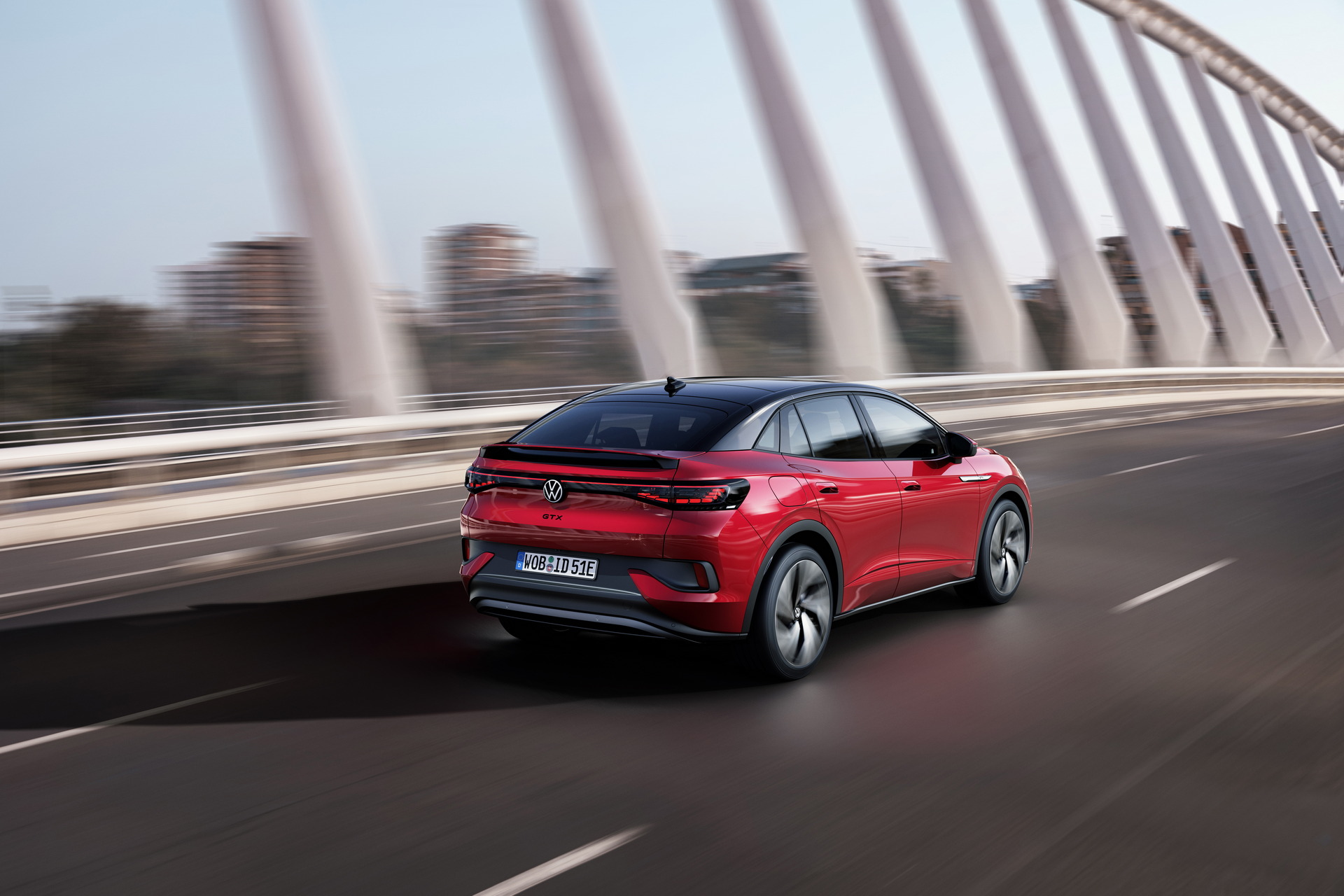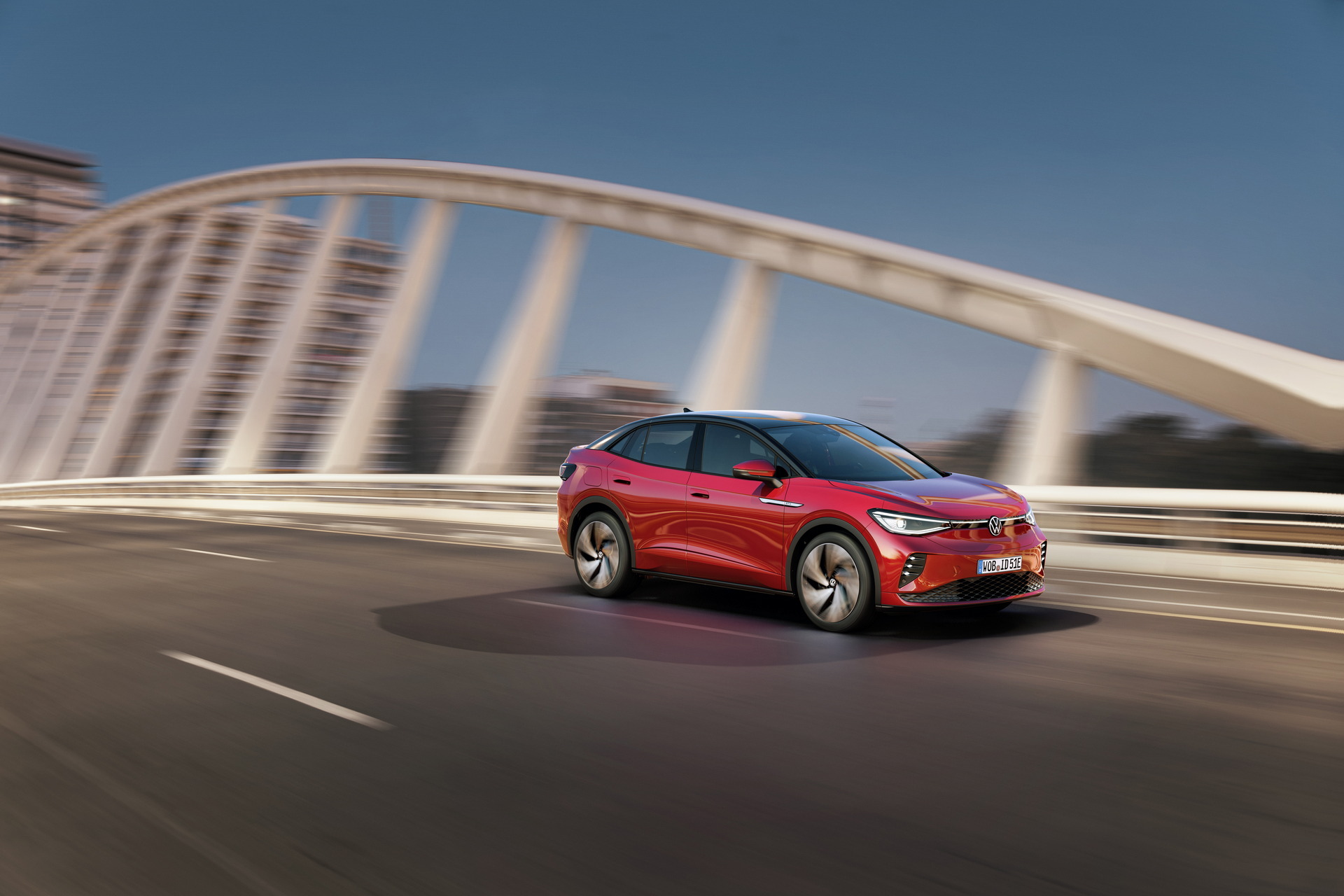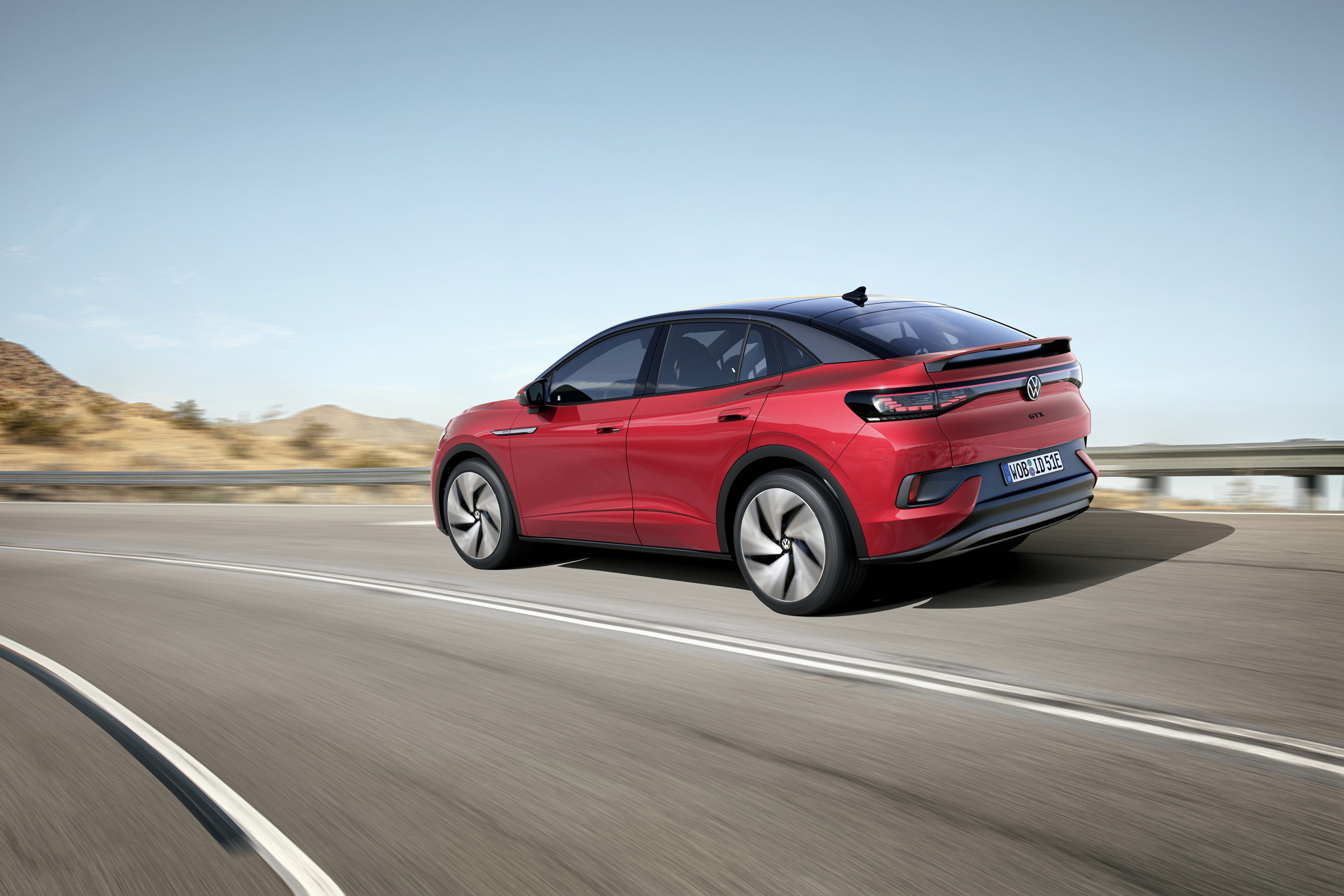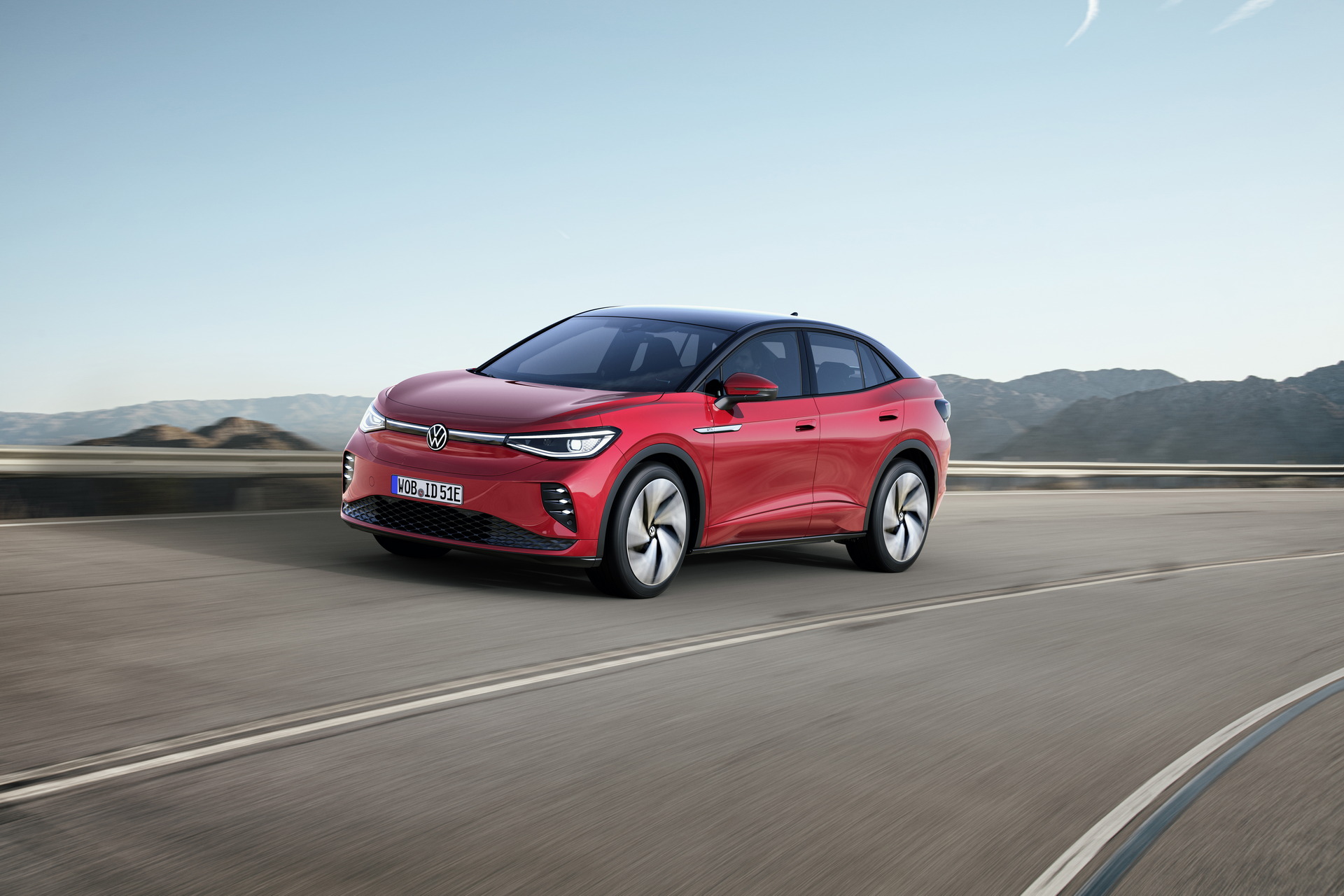Volkswagen is expanding its electric-offerings with the addition of the ID.5, a SUV-Coupe version of the existing ID.4 with a more rakish roofline and rear. A sister model to the similar-shaped Audi Q4 e-tron Sportback and the Skoda Enyaq Coupe iV, the compact-sized ID.5 will initially be sold in Europe, but VW has hinted that more markets could follow later on. There are no current plans to offer it in the U.S., though.
New Shape, Familiar Styling
The ID.5 retains many of the same styling details that make the ID.4 so appealing, then adds a sporty sloping roofline to top it off. The difference in profile isn’t so dramatic that it would reduce functionality – think somewhere in between a BMW X5 vs. X6 and VW’s own Atlas vs. Atlas Cross Sport – but it’s just enough to give it that extra bit of style.
To further distinguish it from the ID.4, the ID.5 gets a bit of its own identity in the form of some unique features. Seeing as it’s supposed to be the sportier coupe counterpart to the ID.4, even the base ID.5 has some cues borrowed from sportier VW models (one that immediately jumps to mind are those Golf R-esque “disconnected” front intakes), while the ID.5 GTX receives a similarly muscular design to the ID.4 GTX. Additionally, every trim of the ID.5 sees their sloping roofline flow into a functional rear spoiler.
Read More: VW’s Bi-Motor ID.X Hot Hatch Gets Green Light As ID.3 GTX
Inside, everything is nearly identical to the ID.4, including the highlights like the steering column-mounted gauge cluster, unique color options, and overall solid-looking design. And despite the sloping roofline, the ID.5 still manages to have 19.4 cubic feet (549 liters) of cargo space with the rear seats in place, and 55.1 cubic feet (1,561 liters) with them folded down.
A Hot GTX Variant From Launch
While its ID.4 sibling had to wait six months before getting a GTX performance trim, the ID.5 will have one from the get-go. Defining the ID.5 GTX is a dual motor, AWD configuration that delivers 108 hp (109 PS / 80 kW) and 119 lb-ft (162 Nm) of torque to the front axle and 201 hp (204 PS / 150 kW) and 229 lb-ft (310 Nm) of torque to the rear, for a total maximum output of 295 hp (299 PS / 220 kW) for up to 30 seconds, which allows the ID.5 GTX to accelerate to 62 mph (100 km/h) in 6.3 seconds and reach a top speed of 112 mph (180 km/h).
As for the rest of the range, the rear-motor-only layout of the ID.5 Pro delivers 172 hp (174 PS / 128 kW) and 229 lb-ft (310 Nm) of torque while the same layout in ID.5 Pro Performance is rated at 201 hp (204 PS / 150 kW) and 229 lb-ft (310 Nm). 0-62 mph (0-100 km/h) times for these two models are 10.4 and 8.4 seconds respectively, and top speed for both stands at 99 mph (160 km/h).
All ID.5 models are equipped with a 77 kWh battery, which in the Pro and Pro Performance models yield a WLTP estimated maximum range of 323 miles (520 km), but only 298 miles (480 km) range in the GTX, likely due to its increased power and higher drag coefficient of 0.27 (the Pro and Pro Performance have a Cd of 0.26).
All The Tech You Want
Related: Volkswagen’s Wolfsburg Plant Back To 1958 Levels Of Output As A Result Of Chip Shortage
As is to be expected from any new EV these days, the ID.5 comes with all the latest tech on board. This includes things like an augmented reality heads-up display, driver aids like adaptive cruise control and lane keep assist, and over-the-air updates to make sure all of it stays current.
The crossover also places a heavy focus on lighting. On the outside, this manifests itself as welcome animations as the driver approaches, while on the inside it comes in the form of ambient lighting in the roof dash panel, doors, and footwells. One other lighting-related aspect of the ID.5 is the ID.Light. The full-width LED strip on the dashboard uses carefully chosen colored light signals to communicate important information to the driver in a way that best allows them to keep their eyes on the road and can respond to commands using the vehicle’s “Hello ID” voice controls.
Aside from all the interactive tech, the ID.5 also emphasizes its advanced charging capabilities. At an AC charging station or home wall charger, the vehicle can be charged at a power of up to 11 kW, however at quick-charging stations, it can be charged at up to 135 kW, which can replenish 199-242 miles (320-390 km) of range in around 30 minutes. Additionally, when combined with a home energy management system, VW’s ID.Charger can perform such tasks as managing charging time to optimize electricity costs, utilizing solar power (if applicable), and even supporting bi-directional charging once the proper infrastructure is fully in place.
European Sales Expected To Start Early 2022
Nothing has been announced yet regarding the ID.5’s pricing or release date, but it’s expected to go on sale across Europe during the first quarter of 2022, with the starting price of each of its trim levels coming in slightly higher than their ID.4 counterparts. As for the U.S., a VW of America spokesperson confirmed to CarScoops that the company has no plans to offer the ID.5 Stateside.



